Frank F. Weber's Blog, page 6
December 4, 2021
Don’t let killers define victims. {The case of NYPD Forensic Criminologist Michelle Lee}
A problem with murder is that the killer is still around to tell a story, while the victim is not.
April 26, 2009, Michelle Lee, age 24, Criminalist in the NYPD Crime lab was found murdered in the Sunnyside Queens neighborhood. Michelle lived close to her parents as she was fond of her family. She was talented and intelligent and became a forensic scientist, her dream job. Her family loved and cherished her. Michelle’s wrists were tied with a wire. She had burn marks from an iron on her chest and torso. A knife stuck out of her neck. Investigators first considered she may have been tortured by one of the drug organizations she had helped prosecute. Her case files indicated Michelle had helped prosecute dangerous offenders. Had she paid the ultimate price, for just doing her job? Michelle was the 7th law enforcement officer in NYPD murdered in the previous 5 years.
Michelle’s wrists were tied with a wire. She had burn marks from an iron on her chest and torso. A knife stuck out of her neck. Investigators first considered she may have been tortured by one of the drug organizations she had helped prosecute. Her case files indicated Michelle had helped prosecute dangerous offenders. Had she paid the ultimate price, for just doing her job? Michelle was the 7th law enforcement officer in NYPD murdered in the previous 5 years.  Investigators were curious about the evidence at the scene. Michelle’s body had been brutally battered, but there was no blood splatter. There were no bruise marks on her wrists from the ligature. (This suggested her wrists were tied after she was dead.)
Investigators were curious about the evidence at the scene. Michelle’s body had been brutally battered, but there was no blood splatter. There were no bruise marks on her wrists from the ligature. (This suggested her wrists were tied after she was dead.)
NYPD detectives studied the video surveillance around the home. Michelle had met with a man that night, but the video wasn’t clear enough to identify him. They discovered DNA evidence but the killer wasn’t in the system.
Michelle had dated Gary McGurk. She loved him and wrote in her diary, “Dear Journal, My mind is rambling . . . I’m not ready to lose Gary… I’m trying to figure out the right time to tell him I love him. I truly do.”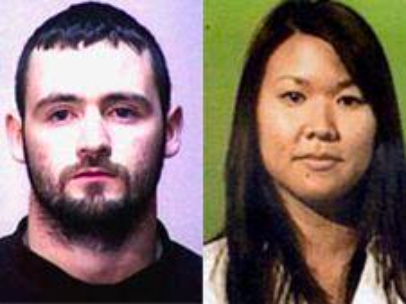 Gary McGurk, age 23, was an attractive immigrant from Ireland. She wrote that McGurk had suffered stage IV cancer which had spread to his kidneys, liver and lungs — and that he had stopped taking his medication. “He’s so brave,” she wrote. “I can’t stop thinking. I can’t stop crying. I love him so much. I wish he would get better. I wish I could hold him forever.” After Gary told her his insurance wasn’t covering his treatment, Michelle gave him thousands of dollars to cover it.
Gary McGurk, age 23, was an attractive immigrant from Ireland. She wrote that McGurk had suffered stage IV cancer which had spread to his kidneys, liver and lungs — and that he had stopped taking his medication. “He’s so brave,” she wrote. “I can’t stop thinking. I can’t stop crying. I love him so much. I wish he would get better. I wish I could hold him forever.” After Gary told her his insurance wasn’t covering his treatment, Michelle gave him thousands of dollars to cover it. 
 When interviewed, Gary McGurk told investigators that their relationship was taboo. They engaged in choking and bondage during sex. He was willing to disclose very intimate information which wasn’t very flattering about Michelle. He presented as a distraught former lover, claiming he was indebted to Michelle as she saved his life by paying for his cancer. McGurk indicated he had moved on and was with his new lover that night. His lover corroborated his alibi. McGurk told investigators that Michelle had called him that night when he was at home. She had another lover over and perhaps the bondage went too far.
When interviewed, Gary McGurk told investigators that their relationship was taboo. They engaged in choking and bondage during sex. He was willing to disclose very intimate information which wasn’t very flattering about Michelle. He presented as a distraught former lover, claiming he was indebted to Michelle as she saved his life by paying for his cancer. McGurk indicated he had moved on and was with his new lover that night. His lover corroborated his alibi. McGurk told investigators that Michelle had called him that night when he was at home. She had another lover over and perhaps the bondage went too far. 
 The forensic lab determined Michelle was killed by blunt force trauma. She had been struck in the head with a hammer. All of the other injuries to her body, being tied up, stabbed and burned were done postmortem. Further, the forensic crew were able to pinpoint that McGurk was in Michelle’s apartment when he allegedly received the call from Michelle that night. McGurk’s new partner had lied about his alibi.
The forensic lab determined Michelle was killed by blunt force trauma. She had been struck in the head with a hammer. All of the other injuries to her body, being tied up, stabbed and burned were done postmortem. Further, the forensic crew were able to pinpoint that McGurk was in Michelle’s apartment when he allegedly received the call from Michelle that night. McGurk’s new partner had lied about his alibi.  McGurk had battered Michelle’s body after she was dead in an effort to make it look like it was the result of kinky sex. They discovered Gary never had cancer and had scammed Michelle out of thousands of dollars. Investigators believe Michelle likely discovered it, an argument ensued, and he beat her to death with a hammer to prevent her from reporting him to the police. He then staged a crime scene to throw investigators off. In court, McGurk said that he first wrapped Lee's head with Saran wrap before striking her with a hammer, so there would be no blood when he striped her and repositioned her body. The choking and burning of her body, all occurred after she was dead. In a rambling court statement, McGurk said Lee "told me that she made bad decisions. I told her that I was a bad decision, joking."
McGurk had battered Michelle’s body after she was dead in an effort to make it look like it was the result of kinky sex. They discovered Gary never had cancer and had scammed Michelle out of thousands of dollars. Investigators believe Michelle likely discovered it, an argument ensued, and he beat her to death with a hammer to prevent her from reporting him to the police. He then staged a crime scene to throw investigators off. In court, McGurk said that he first wrapped Lee's head with Saran wrap before striking her with a hammer, so there would be no blood when he striped her and repositioned her body. The choking and burning of her body, all occurred after she was dead. In a rambling court statement, McGurk said Lee "told me that she made bad decisions. I told her that I was a bad decision, joking." 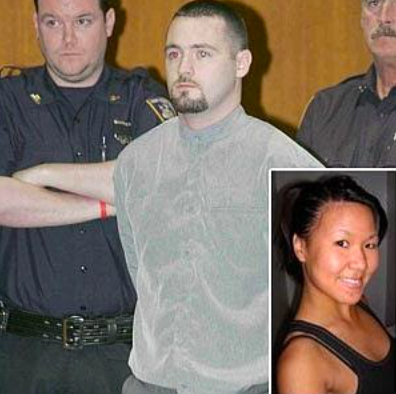 McGurk had murdered Michelle and then attempted to strip her of her dignity. The only evidence that she was into kinky sex was the statements from McGurk—a liar and a killer. When the police stopped over to arrest Gary, he was leaving with a bag and a passport. McGurk quickly changed his story. He now claimed he had come over to Michelle’s, and they were acting out the kinky sex she desired when she was accidently killed.
McGurk had murdered Michelle and then attempted to strip her of her dignity. The only evidence that she was into kinky sex was the statements from McGurk—a liar and a killer. When the police stopped over to arrest Gary, he was leaving with a bag and a passport. McGurk quickly changed his story. He now claimed he had come over to Michelle’s, and they were acting out the kinky sex she desired when she was accidently killed.
Gary McGurk pled guilty to Manslaughter and was given the maximum sentence of 29 to 37 years in prison. Michelle’s sister Stephanie asked him in court, “What was the reason behind your actions?” When he didn’t respond she told him, “Knowing what you put her through makes my blood boil.”
The plea spared Lee's family from the emotional trauma of having to listen to testimony at trial about the gruesome circumstances surrounding Ms. Lee’s death. The prosecutor stated, "I think that Michelle would have been especially proud of her colleagues at the NYPD’s Queens crime lab who worked tirelessly to make certain that her killer was apprehended, and that justice would be served."
 Writing and publishing is a little different than you might imagine. For example: I’m currently speaking on Burning Bridges (my 5th mystery). I’m waiting for Black and Blue to be printed (my 6th mystery). And I’m starting to write my 7th novel. I’m not sure what I’ll call it yet. It’s about a true crime that went unsolved for years. I’m thinking of writing it in Hillman, since it’s a rural case. Perhaps even calling the book, The Hillman House, or the House of Hillman. I’m open to feedback. I need help with 2 things.
Writing and publishing is a little different than you might imagine. For example: I’m currently speaking on Burning Bridges (my 5th mystery). I’m waiting for Black and Blue to be printed (my 6th mystery). And I’m starting to write my 7th novel. I’m not sure what I’ll call it yet. It’s about a true crime that went unsolved for years. I’m thinking of writing it in Hillman, since it’s a rural case. Perhaps even calling the book, The Hillman House, or the House of Hillman. I’m open to feedback. I need help with 2 things.
I’d like a house, perhaps abandoned, in the Hillman area to use as the location and maybe even the cover shot. If you have a thought, send me the location.



 2. I’d like a culvert location, typical width about 18 inches, that I can take a picture of someone crawling through. In the actual case one person escaped by crawling through an 18 inch culvert beneath a road. (The picture below is a stock picture. I need an actual culvert so I can recruit a model to crawl through for the back cover of the book.)
2. I’d like a culvert location, typical width about 18 inches, that I can take a picture of someone crawling through. In the actual case one person escaped by crawling through an 18 inch culvert beneath a road. (The picture below is a stock picture. I need an actual culvert so I can recruit a model to crawl through for the back cover of the book.) 
 Thanks for listening,
Thanks for listening,
Frank
 December 8, 2021, from 6:30 to 8:00 p.m., Forensic Psychologist, Frank Weber, will be at Cherry Street Books in Alexandria. Frank will speak on the writing of True Crime, forensic work and his latest book from 6:30 to 8:00 p.m. Frank has profiled cold case homicides for the Bureau of Criminal Apprehension and narrated an investigative show on the Oxygen channel titled Murdered by Morning. His newest True Crime novel, Burning Bridges, examines the life and demise of a psychopath in central Minnesota. Frank will demonstrate a lie detector test (volunteer a friend). Cherry Street Books is located at 503 Broadway Street, Alexandria, Minnesota, 56308
December 8, 2021, from 6:30 to 8:00 p.m., Forensic Psychologist, Frank Weber, will be at Cherry Street Books in Alexandria. Frank will speak on the writing of True Crime, forensic work and his latest book from 6:30 to 8:00 p.m. Frank has profiled cold case homicides for the Bureau of Criminal Apprehension and narrated an investigative show on the Oxygen channel titled Murdered by Morning. His newest True Crime novel, Burning Bridges, examines the life and demise of a psychopath in central Minnesota. Frank will demonstrate a lie detector test (volunteer a friend). Cherry Street Books is located at 503 Broadway Street, Alexandria, Minnesota, 56308
 Monday, December 13, 2021, radio interview on the Bob Hughes morning show from 8:05 to 8:25 a.m. KSNI radio ; AM 1450. FM 99.3
Monday, December 13, 2021, radio interview on the Bob Hughes morning show from 8:05 to 8:25 a.m. KSNI radio ; AM 1450. FM 99.3
 Tuesday, December 14, 2021, Forensic Psychologist, Frank Weber, will be speaking to the Sauk Centre Rotary Club from 12:25 to 1:00 p.m. Frank will speak on the writing of True Crime, forensic work and his latest book. His newest True Crime novel, Burning Bridges, examines the life and demise of a psychopath in St. Cloud, Minnesota. Frank has profiled cold case homicides for the Bureau of Criminal Apprehension and narrated an investigative show on the Oxygen channel titled Murdered by Morning. The Sauk Centre Rotary Club meets at the Minnesota National Bank from 12:00 to 1:00 at 131 12th Street South, Sauk Centre, Minnesota.
Tuesday, December 14, 2021, Forensic Psychologist, Frank Weber, will be speaking to the Sauk Centre Rotary Club from 12:25 to 1:00 p.m. Frank will speak on the writing of True Crime, forensic work and his latest book. His newest True Crime novel, Burning Bridges, examines the life and demise of a psychopath in St. Cloud, Minnesota. Frank has profiled cold case homicides for the Bureau of Criminal Apprehension and narrated an investigative show on the Oxygen channel titled Murdered by Morning. The Sauk Centre Rotary Club meets at the Minnesota National Bank from 12:00 to 1:00 at 131 12th Street South, Sauk Centre, Minnesota.
April 26, 2009, Michelle Lee, age 24, Criminalist in the NYPD Crime lab was found murdered in the Sunnyside Queens neighborhood. Michelle lived close to her parents as she was fond of her family. She was talented and intelligent and became a forensic scientist, her dream job. Her family loved and cherished her.
 Michelle’s wrists were tied with a wire. She had burn marks from an iron on her chest and torso. A knife stuck out of her neck. Investigators first considered she may have been tortured by one of the drug organizations she had helped prosecute. Her case files indicated Michelle had helped prosecute dangerous offenders. Had she paid the ultimate price, for just doing her job? Michelle was the 7th law enforcement officer in NYPD murdered in the previous 5 years.
Michelle’s wrists were tied with a wire. She had burn marks from an iron on her chest and torso. A knife stuck out of her neck. Investigators first considered she may have been tortured by one of the drug organizations she had helped prosecute. Her case files indicated Michelle had helped prosecute dangerous offenders. Had she paid the ultimate price, for just doing her job? Michelle was the 7th law enforcement officer in NYPD murdered in the previous 5 years.  Investigators were curious about the evidence at the scene. Michelle’s body had been brutally battered, but there was no blood splatter. There were no bruise marks on her wrists from the ligature. (This suggested her wrists were tied after she was dead.)
Investigators were curious about the evidence at the scene. Michelle’s body had been brutally battered, but there was no blood splatter. There were no bruise marks on her wrists from the ligature. (This suggested her wrists were tied after she was dead.)NYPD detectives studied the video surveillance around the home. Michelle had met with a man that night, but the video wasn’t clear enough to identify him. They discovered DNA evidence but the killer wasn’t in the system.
Michelle had dated Gary McGurk. She loved him and wrote in her diary, “Dear Journal, My mind is rambling . . . I’m not ready to lose Gary… I’m trying to figure out the right time to tell him I love him. I truly do.”
 Gary McGurk, age 23, was an attractive immigrant from Ireland. She wrote that McGurk had suffered stage IV cancer which had spread to his kidneys, liver and lungs — and that he had stopped taking his medication. “He’s so brave,” she wrote. “I can’t stop thinking. I can’t stop crying. I love him so much. I wish he would get better. I wish I could hold him forever.” After Gary told her his insurance wasn’t covering his treatment, Michelle gave him thousands of dollars to cover it.
Gary McGurk, age 23, was an attractive immigrant from Ireland. She wrote that McGurk had suffered stage IV cancer which had spread to his kidneys, liver and lungs — and that he had stopped taking his medication. “He’s so brave,” she wrote. “I can’t stop thinking. I can’t stop crying. I love him so much. I wish he would get better. I wish I could hold him forever.” After Gary told her his insurance wasn’t covering his treatment, Michelle gave him thousands of dollars to cover it. 
 When interviewed, Gary McGurk told investigators that their relationship was taboo. They engaged in choking and bondage during sex. He was willing to disclose very intimate information which wasn’t very flattering about Michelle. He presented as a distraught former lover, claiming he was indebted to Michelle as she saved his life by paying for his cancer. McGurk indicated he had moved on and was with his new lover that night. His lover corroborated his alibi. McGurk told investigators that Michelle had called him that night when he was at home. She had another lover over and perhaps the bondage went too far.
When interviewed, Gary McGurk told investigators that their relationship was taboo. They engaged in choking and bondage during sex. He was willing to disclose very intimate information which wasn’t very flattering about Michelle. He presented as a distraught former lover, claiming he was indebted to Michelle as she saved his life by paying for his cancer. McGurk indicated he had moved on and was with his new lover that night. His lover corroborated his alibi. McGurk told investigators that Michelle had called him that night when he was at home. She had another lover over and perhaps the bondage went too far. 
 The forensic lab determined Michelle was killed by blunt force trauma. She had been struck in the head with a hammer. All of the other injuries to her body, being tied up, stabbed and burned were done postmortem. Further, the forensic crew were able to pinpoint that McGurk was in Michelle’s apartment when he allegedly received the call from Michelle that night. McGurk’s new partner had lied about his alibi.
The forensic lab determined Michelle was killed by blunt force trauma. She had been struck in the head with a hammer. All of the other injuries to her body, being tied up, stabbed and burned were done postmortem. Further, the forensic crew were able to pinpoint that McGurk was in Michelle’s apartment when he allegedly received the call from Michelle that night. McGurk’s new partner had lied about his alibi.  McGurk had battered Michelle’s body after she was dead in an effort to make it look like it was the result of kinky sex. They discovered Gary never had cancer and had scammed Michelle out of thousands of dollars. Investigators believe Michelle likely discovered it, an argument ensued, and he beat her to death with a hammer to prevent her from reporting him to the police. He then staged a crime scene to throw investigators off. In court, McGurk said that he first wrapped Lee's head with Saran wrap before striking her with a hammer, so there would be no blood when he striped her and repositioned her body. The choking and burning of her body, all occurred after she was dead. In a rambling court statement, McGurk said Lee "told me that she made bad decisions. I told her that I was a bad decision, joking."
McGurk had battered Michelle’s body after she was dead in an effort to make it look like it was the result of kinky sex. They discovered Gary never had cancer and had scammed Michelle out of thousands of dollars. Investigators believe Michelle likely discovered it, an argument ensued, and he beat her to death with a hammer to prevent her from reporting him to the police. He then staged a crime scene to throw investigators off. In court, McGurk said that he first wrapped Lee's head with Saran wrap before striking her with a hammer, so there would be no blood when he striped her and repositioned her body. The choking and burning of her body, all occurred after she was dead. In a rambling court statement, McGurk said Lee "told me that she made bad decisions. I told her that I was a bad decision, joking."  McGurk had murdered Michelle and then attempted to strip her of her dignity. The only evidence that she was into kinky sex was the statements from McGurk—a liar and a killer. When the police stopped over to arrest Gary, he was leaving with a bag and a passport. McGurk quickly changed his story. He now claimed he had come over to Michelle’s, and they were acting out the kinky sex she desired when she was accidently killed.
McGurk had murdered Michelle and then attempted to strip her of her dignity. The only evidence that she was into kinky sex was the statements from McGurk—a liar and a killer. When the police stopped over to arrest Gary, he was leaving with a bag and a passport. McGurk quickly changed his story. He now claimed he had come over to Michelle’s, and they were acting out the kinky sex she desired when she was accidently killed.Gary McGurk pled guilty to Manslaughter and was given the maximum sentence of 29 to 37 years in prison. Michelle’s sister Stephanie asked him in court, “What was the reason behind your actions?” When he didn’t respond she told him, “Knowing what you put her through makes my blood boil.”
The plea spared Lee's family from the emotional trauma of having to listen to testimony at trial about the gruesome circumstances surrounding Ms. Lee’s death. The prosecutor stated, "I think that Michelle would have been especially proud of her colleagues at the NYPD’s Queens crime lab who worked tirelessly to make certain that her killer was apprehended, and that justice would be served."
 Writing and publishing is a little different than you might imagine. For example: I’m currently speaking on Burning Bridges (my 5th mystery). I’m waiting for Black and Blue to be printed (my 6th mystery). And I’m starting to write my 7th novel. I’m not sure what I’ll call it yet. It’s about a true crime that went unsolved for years. I’m thinking of writing it in Hillman, since it’s a rural case. Perhaps even calling the book, The Hillman House, or the House of Hillman. I’m open to feedback. I need help with 2 things.
Writing and publishing is a little different than you might imagine. For example: I’m currently speaking on Burning Bridges (my 5th mystery). I’m waiting for Black and Blue to be printed (my 6th mystery). And I’m starting to write my 7th novel. I’m not sure what I’ll call it yet. It’s about a true crime that went unsolved for years. I’m thinking of writing it in Hillman, since it’s a rural case. Perhaps even calling the book, The Hillman House, or the House of Hillman. I’m open to feedback. I need help with 2 things.I’d like a house, perhaps abandoned, in the Hillman area to use as the location and maybe even the cover shot. If you have a thought, send me the location.



 2. I’d like a culvert location, typical width about 18 inches, that I can take a picture of someone crawling through. In the actual case one person escaped by crawling through an 18 inch culvert beneath a road. (The picture below is a stock picture. I need an actual culvert so I can recruit a model to crawl through for the back cover of the book.)
2. I’d like a culvert location, typical width about 18 inches, that I can take a picture of someone crawling through. In the actual case one person escaped by crawling through an 18 inch culvert beneath a road. (The picture below is a stock picture. I need an actual culvert so I can recruit a model to crawl through for the back cover of the book.) 
 Thanks for listening,
Thanks for listening,Frank
 December 8, 2021, from 6:30 to 8:00 p.m., Forensic Psychologist, Frank Weber, will be at Cherry Street Books in Alexandria. Frank will speak on the writing of True Crime, forensic work and his latest book from 6:30 to 8:00 p.m. Frank has profiled cold case homicides for the Bureau of Criminal Apprehension and narrated an investigative show on the Oxygen channel titled Murdered by Morning. His newest True Crime novel, Burning Bridges, examines the life and demise of a psychopath in central Minnesota. Frank will demonstrate a lie detector test (volunteer a friend). Cherry Street Books is located at 503 Broadway Street, Alexandria, Minnesota, 56308
December 8, 2021, from 6:30 to 8:00 p.m., Forensic Psychologist, Frank Weber, will be at Cherry Street Books in Alexandria. Frank will speak on the writing of True Crime, forensic work and his latest book from 6:30 to 8:00 p.m. Frank has profiled cold case homicides for the Bureau of Criminal Apprehension and narrated an investigative show on the Oxygen channel titled Murdered by Morning. His newest True Crime novel, Burning Bridges, examines the life and demise of a psychopath in central Minnesota. Frank will demonstrate a lie detector test (volunteer a friend). Cherry Street Books is located at 503 Broadway Street, Alexandria, Minnesota, 56308 Monday, December 13, 2021, radio interview on the Bob Hughes morning show from 8:05 to 8:25 a.m. KSNI radio ; AM 1450. FM 99.3
Monday, December 13, 2021, radio interview on the Bob Hughes morning show from 8:05 to 8:25 a.m. KSNI radio ; AM 1450. FM 99.3
 Tuesday, December 14, 2021, Forensic Psychologist, Frank Weber, will be speaking to the Sauk Centre Rotary Club from 12:25 to 1:00 p.m. Frank will speak on the writing of True Crime, forensic work and his latest book. His newest True Crime novel, Burning Bridges, examines the life and demise of a psychopath in St. Cloud, Minnesota. Frank has profiled cold case homicides for the Bureau of Criminal Apprehension and narrated an investigative show on the Oxygen channel titled Murdered by Morning. The Sauk Centre Rotary Club meets at the Minnesota National Bank from 12:00 to 1:00 at 131 12th Street South, Sauk Centre, Minnesota.
Tuesday, December 14, 2021, Forensic Psychologist, Frank Weber, will be speaking to the Sauk Centre Rotary Club from 12:25 to 1:00 p.m. Frank will speak on the writing of True Crime, forensic work and his latest book. His newest True Crime novel, Burning Bridges, examines the life and demise of a psychopath in St. Cloud, Minnesota. Frank has profiled cold case homicides for the Bureau of Criminal Apprehension and narrated an investigative show on the Oxygen channel titled Murdered by Morning. The Sauk Centre Rotary Club meets at the Minnesota National Bank from 12:00 to 1:00 at 131 12th Street South, Sauk Centre, Minnesota.
Published on December 04, 2021 12:04
November 15, 2021
The Happy Face Killer


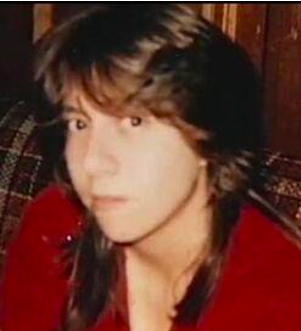 Taunja Bennett (The 1st identified victim
Taunja Bennett (The 1st identified victimIn 1990, Taunja Bennett, 23 years old, met a man in a Portland-area bar, and agreed to go back to his home with him. He was hoping to have sex with her, and a physical altercation ensued. The man repeatedly struck Taunja in the face, then strangled her with a rope out of fear of going to prison for assault. “I meant to kill her to cover up the assault,” he later told a reporter. He showed no remorse, adding, “It is matter of fact ‘cause that’s what it is.” Her body was discovered at the edge of a woods.
 Laverne Pavlinac reported her boyfriend, John Sosnovske, had killed Taunja, and she had witnessed it. After her first two descriptions of the homicide weren’t believable, she told investigators that she pulled the ligature around Taunja’s neck, while Sosnovske had sex with her. When asked, 'Why is she dead?'" Pavlinac told investigators during a recorded statement on Feb. 26, 1990. "He says, 'Because I choked her'… I said, 'I think we need to take her to a hospital. We need to report this, John.' [He said,] 'No, no. I'll go to the pen. I'll go to death row.’”
Laverne Pavlinac reported her boyfriend, John Sosnovske, had killed Taunja, and she had witnessed it. After her first two descriptions of the homicide weren’t believable, she told investigators that she pulled the ligature around Taunja’s neck, while Sosnovske had sex with her. When asked, 'Why is she dead?'" Pavlinac told investigators during a recorded statement on Feb. 26, 1990. "He says, 'Because I choked her'… I said, 'I think we need to take her to a hospital. We need to report this, John.' [He said,] 'No, no. I'll go to the pen. I'll go to death row.’” 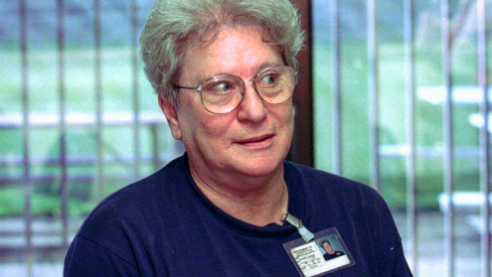 Laverne Pavlinac Conflicting evidence. The front of Taunja’s jeans had been cut out. Investigators thought the killer kept it as a souvenir. When they searched Sosnovske’s home, they found the cut-out front of a pair of girl’s jeans. Sosnovske claimed he didn’t know how the cut-out part of a girl’s jeans got into his home. The case seemed resolved. However, when the lab report came back, the fabric wasn’t a match to Taunja’s jeans. This simply didn’t make sense, so the investigators re-interviewed Laverne Pavlinac. She admitted she had planted the jean material, with the hope of getting Sosnovske convicted because she was certain of his guilt. Frustrated, the investigators began to question Sosnovske’s guilt. So, they asked Laverne to take them to the exact location of where they dumped Taunja’s body. She did.
Laverne Pavlinac Conflicting evidence. The front of Taunja’s jeans had been cut out. Investigators thought the killer kept it as a souvenir. When they searched Sosnovske’s home, they found the cut-out front of a pair of girl’s jeans. Sosnovske claimed he didn’t know how the cut-out part of a girl’s jeans got into his home. The case seemed resolved. However, when the lab report came back, the fabric wasn’t a match to Taunja’s jeans. This simply didn’t make sense, so the investigators re-interviewed Laverne Pavlinac. She admitted she had planted the jean material, with the hope of getting Sosnovske convicted because she was certain of his guilt. Frustrated, the investigators began to question Sosnovske’s guilt. So, they asked Laverne to take them to the exact location of where they dumped Taunja’s body. She did.  Laverne pointing to the site of the body. John Sosnovske denied committing the murder but accepted a guilty plea to avoid being executed. As she and Sosnovske began to serve their life sentences, the actual killer continued his murder spree. Pavlinac had made the whole thing up. When she recanted, Pavlinac said she falsely confessed because she was stuck in a volatile relationship with Sosnovske. She was desperately seeking a way out and wanted him in prison. In the process, she also falsely implicated herself. She was able to lead investigators to the site where the body had been discovered, as she had learned of the location from people in the community.
Laverne pointing to the site of the body. John Sosnovske denied committing the murder but accepted a guilty plea to avoid being executed. As she and Sosnovske began to serve their life sentences, the actual killer continued his murder spree. Pavlinac had made the whole thing up. When she recanted, Pavlinac said she falsely confessed because she was stuck in a volatile relationship with Sosnovske. She was desperately seeking a way out and wanted him in prison. In the process, she also falsely implicated herself. She was able to lead investigators to the site where the body had been discovered, as she had learned of the location from people in the community.Laverne’s daughter shared, "I think what happened to mother was she was in an abusive relationship, and she was desperate, and desperate people do desperate things, not to say that it was right, but that's what I think happened."
 Laverne and John Sosnovske "The greatest human tragedy is that Laverne Pavlinac derailed the investigation in 1990, and in four years, Keith Jesperson killed more women," said Jim McIntyre, the Multnomah County, Oregon, prosecutor who handled the cases.
Laverne and John Sosnovske "The greatest human tragedy is that Laverne Pavlinac derailed the investigation in 1990, and in four years, Keith Jesperson killed more women," said Jim McIntyre, the Multnomah County, Oregon, prosecutor who handled the cases.Taunja Bennett was the first identified victim of 5 victims. Ironically, Laverne Pavlinac and John Sosnovske were ultimately released because the actual killer was envious of the attention they received. Keith Jesperson drew a smiley face on a bathroom wall hundreds of miles from the scene of the crime and wrote an anonymous letter confessing to Bennett's murder. When that did not elicit a response, he began writing letters to the media and authorities. Investigators did not believe Jesperson initially, and viewed him as someone who simply wanted a lot of attention. He finally told them exactly where he discarded Taunja’s driver’s license. Years had passed, and the area was now grown over with brush. Searchers were unable to find the license which confirmed to them that Pavlinac and Sosnovske were the killers. However, a group of boy scouts went through the area weeks later and cut away the brush. They found Taunja Bennett’s driver’s license, confirming Jesperson was the killer.
Keith Jesperson came to be known as “Happy Face Killer”. Keith was an over-the-road truck driver.
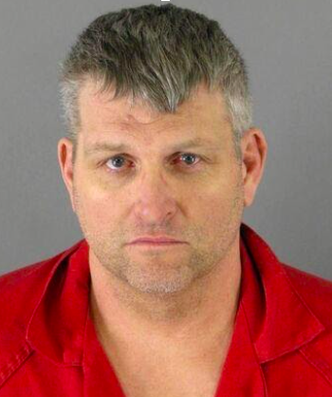 Keith Hunter Jesperson. Born: April 6, 1955, in Chilliwack, British Columbia, Canada. Serving 3 life sentences.
Keith Hunter Jesperson. Born: April 6, 1955, in Chilliwack, British Columbia, Canada. Serving 3 life sentences.Keith Jesperson was raised in a violent household. His father and grandfather physically abused their families. Keith was bullied by his brothers and then by classmates. He attacked a friend in school, and later attempted to drown a boy, leaving the boy unconscious. He strangled animals and reported being raped at age 14.
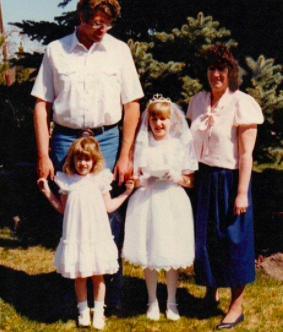
 Keith with family. Keith at 6’6”, was a large strong man. He married Rose Hucke and they had 3 children. When Jesperson was unable to join the Royal Canadian Mounted Police, he began working as an interstate truck driver. Rose started to suspect he was cheating on her and divorced him. His daughter remembered Keith torturing her cats while she begged him to stop. Jesperson was a disgusting individual.
Keith with family. Keith at 6’6”, was a large strong man. He married Rose Hucke and they had 3 children. When Jesperson was unable to join the Royal Canadian Mounted Police, he began working as an interstate truck driver. Rose started to suspect he was cheating on her and divorced him. His daughter remembered Keith torturing her cats while she begged him to stop. Jesperson was a disgusting individual. VictimsOn January 23, 1990, Jesperson took Taunja Bennet home from a bar and murdered her. It is estimated he punched her in the face 20 times and then strangled her.
On April 12, 1990, Daun Richert-Slagle, 21, was abducted by Jesperson. After an argument with her husband, she took her baby and went to the store. Jesperson began talking to her in the parking lot and he seemed friendly. Once they were in a vehicle talking, Jesperson attempted to sexually assault her. The baby started crying. He attempted to break her neck, but ultimately released her. Daun would later sue Lifetime movies for depicting her as a prostitute in their portrayal of the incident. This clearly wasn’t the case.
 Daun Richert-Slagle 3. It was August 1992 (2 ½ years later) when Keith Jesperson killed his next victim, Claudia. (She hasn’t been identified.) Claudia’s body was discovered in Blythe, California. Jesperson reported picking her up at a truck stop and offered her a ride. He duct taped her hands and mouth before raping and killing her.
Daun Richert-Slagle 3. It was August 1992 (2 ½ years later) when Keith Jesperson killed his next victim, Claudia. (She hasn’t been identified.) Claudia’s body was discovered in Blythe, California. Jesperson reported picking her up at a truck stop and offered her a ride. He duct taped her hands and mouth before raping and killing her. 4. Cynthia Lyn Rose, age 32 was found raped and strangled in Turlock, California in September of 1992. Jesperson reports she came to his truck when he was sleeping.
 5. In November of 1992, Laurie Ann Pentland, age 26, was murdered in Salem, Oregon. Jesperson claims she was a prostitute was tried to double charge him for sex.
5. In November of 1992, Laurie Ann Pentland, age 26, was murdered in Salem, Oregon. Jesperson claims she was a prostitute was tried to double charge him for sex. 6. California Jane Doe. Jesperson thought her name was “Carla” or “Cindy.” He claimed this still-unidentified woman as his fifth victim but told Phelps that he can’t recall anything about her. Her body was found on a roadside rock pile in Santa Nella, California in July of 1993.
 A facial recognition recreation of “Carla” or “Cindy.” 7. Florida Jane Doe. This victim was known only as Susanne, whom he met in Crestview, Florida, in September of 1994. Jesperson described murdering her, like other women he killed, as “putting her out of her misery.”
A facial recognition recreation of “Carla” or “Cindy.” 7. Florida Jane Doe. This victim was known only as Susanne, whom he met in Crestview, Florida, in September of 1994. Jesperson described murdering her, like other women he killed, as “putting her out of her misery.”  A facial recreation of “Susanne.”
A facial recreation of “Susanne.” 8. Angela Subrize, 21. Jesperson met her in a bar in January 1995 and agreed to give her a ride from Spokane, Washington to Indiana. Jesperson raped her and strangled her. He then strapped her body to the undercarriage of his truck face down, with the idea that he would “grind off her face and her prints” as he drove across the country. Her body was discovered in September of 1995 along a freeway in Nebraska.
8. Angela Subrize, 21. Jesperson met her in a bar in January 1995 and agreed to give her a ride from Spokane, Washington to Indiana. Jesperson raped her and strangled her. He then strapped her body to the undercarriage of his truck face down, with the idea that he would “grind off her face and her prints” as he drove across the country. Her body was discovered in September of 1995 along a freeway in Nebraska. 9. Julia Ann Winningham, 41, was the victim that got Jesperson caught. Jesperson had dated her before before killing her on March 3, 1995 because he believed she was after his money. Because of their relationship, authorities connected her death to him. Jesperson said he had gagged her with duct tape, raped her in the sleeping cab of his rig and strangled her. Jesperson sent a letter to her brother where he admitted having killed her. Julia’s brother sent the letter to the police. Jesperson attempted suicide twice but failed.
 Julie Winningham, Jesperson's fiancée and last murder victim. Her body was discovered along the highway. In order to avoid the death penalty, Jesperson cut a plea deal to serve multiple concurrent life sentences. In November 2007, Jesperson reflected on his murders while speaking to Duquesne University forensic science and law students via conference call. “When I did it, it was done, over with.” “I did not cherish murder. I basically looked at it as something I had to do to get it over with and keep going. I didn’t intend on holding [the killings] hostage in my mind or in my grip for any more of a length of time than I had to.” He went on to describe his nickname. “You can imagine, I walk the track out here with other convicts and they're saying, ‘If you're happy and you know it, clap your hands!’” he said. “How would I pick a better name than that?”
Julie Winningham, Jesperson's fiancée and last murder victim. Her body was discovered along the highway. In order to avoid the death penalty, Jesperson cut a plea deal to serve multiple concurrent life sentences. In November 2007, Jesperson reflected on his murders while speaking to Duquesne University forensic science and law students via conference call. “When I did it, it was done, over with.” “I did not cherish murder. I basically looked at it as something I had to do to get it over with and keep going. I didn’t intend on holding [the killings] hostage in my mind or in my grip for any more of a length of time than I had to.” He went on to describe his nickname. “You can imagine, I walk the track out here with other convicts and they're saying, ‘If you're happy and you know it, clap your hands!’” he said. “How would I pick a better name than that?”Laverne Pavlinoc died in 2003 of heart failure. John Sosnovske died in 2013. Keith Jesperson is serving 3 life sentences in the Oregon State Penitentiary for the murders of Taunja Bennett, Julie Winningham and Laurie Ann Pentland. I would have included more victim pictures, if I had access to them. This is a sad case of women who needed guidance who lost their lives to self-centered and cruel narcissists, and 2 lives ruined by a false confession.
Black and Blue
Thank you for your feedback on the pictures! Most of the story takes place in this area.

 The cover pictures were taken by Trisha Spencer from Little Falls of Xperience photography.
The cover pictures were taken by Trisha Spencer from Little Falls of Xperience photography. The front cover model is Matthew Greene, my nephew, Albert and Dorothy’s son. Matthew is an outstanding blues guitar player. The back cover model is Kloe Kapsner, an architect college student.
 In Black and Blue, you will see some old familiar names such Agnes Schraut and Mia Strock from Lying Close. Once again, I’ve decided to include maps and a list of characters. This is a great True Crime story!
In Black and Blue, you will see some old familiar names such Agnes Schraut and Mia Strock from Lying Close. Once again, I’ve decided to include maps and a list of characters. This is a great True Crime story!Thanks for listening,
Frank
 December 8, 2021, from 6:30 to 8:00 p.m., Forensic Psychologist, Frank Weber, will be at Cherry Street Books in Alexandria. Frank will speak on the writing of True Crime, forensic work and his latest book from 6:30 to 8:00 p.m. Frank has profiled cold case homicides for the Bureau of Criminal Apprehension and narrated an investigative show on the Oxygen channel titled Murdered by Morning. His newest True Crime novel, Burning Bridges, examines the life and demise of a psychopath in central Minnesota. Frank will demonstrate a lie detector test (volunteer a friend). Cherry Street Books is located at 503 Broadway Street, Alexandria, Minnesota, 56308.
December 8, 2021, from 6:30 to 8:00 p.m., Forensic Psychologist, Frank Weber, will be at Cherry Street Books in Alexandria. Frank will speak on the writing of True Crime, forensic work and his latest book from 6:30 to 8:00 p.m. Frank has profiled cold case homicides for the Bureau of Criminal Apprehension and narrated an investigative show on the Oxygen channel titled Murdered by Morning. His newest True Crime novel, Burning Bridges, examines the life and demise of a psychopath in central Minnesota. Frank will demonstrate a lie detector test (volunteer a friend). Cherry Street Books is located at 503 Broadway Street, Alexandria, Minnesota, 56308.
Published on November 15, 2021 11:03
November 7, 2021
Black and Blue (The 6th book in the Jon Frederick series)
The true story of the search for the killer of 19-year-old Sadie Sullivan.
A chance meeting between Minneapolis Police Officer Xavier – Zave – Williams and Sadie changed his life and ended hers. Zave joins Investigator Jon Frederick as a black and white team reopening a cold case with a lot of gray—contaminated evidence, questionable court decisions, and two opposing hardened suspects. In the backdrop of modern-day Minneapolis, investigators are left to sort through the chaos, shootings, and political outrage to deliver justice to Sadie’s family. Black and Blue is an intense thriller about love, tenderness, and resilience, in an era when it’s easy to be callous.


 Sadie Sullivan was a salt of the earth, kind and loving young woman. She had a child at 15, she adopted out to a couple in her church. Sadie worked the midnight shift at a 24-hour Cub Foods in South Minneapolis so she could babysit for the couple and spend some time with her daughter. Unfortunately, on Friday, August 30, 2013, Sadie never made it to work.
Sadie Sullivan was a salt of the earth, kind and loving young woman. She had a child at 15, she adopted out to a couple in her church. Sadie worked the midnight shift at a 24-hour Cub Foods in South Minneapolis so she could babysit for the couple and spend some time with her daughter. Unfortunately, on Friday, August 30, 2013, Sadie never made it to work.


 Sadie’s fiancé was a white police officer, Bobby Long. A black heavyweight boxer, Flamin’ Ray Fury, was convicted of her rape and murder. The case brings to light Ray’s other crimes. In the years following Sadie’s death, it’s discovered Bobby isn’t such a stellar person himself. Bobby’s convicted of a brutal rape and incarcerated also.
Sadie’s fiancé was a white police officer, Bobby Long. A black heavyweight boxer, Flamin’ Ray Fury, was convicted of her rape and murder. The case brings to light Ray’s other crimes. In the years following Sadie’s death, it’s discovered Bobby isn’t such a stellar person himself. Bobby’s convicted of a brutal rape and incarcerated also.


 Jon Frederick and Zave Williams work together in an intense investigation, confronting a gang and a militia, to bring Sadie’s family justice.
Jon Frederick and Zave Williams work together in an intense investigation, confronting a gang and a militia, to bring Sadie’s family justice. 
 Here is your chance to give your input on the front and back covers. I have to apologize to my readers here, as Burning Bridges cover model, Kloe Kapsner, will appear in this book as a new character, Lauren Herald, from Hillman. I needed a tall blonde young woman for this shot, and Kloe worked perfectly. “Lauren” works as a sketch artist and befriends Zave as the investigation progresses. Lauren may be a recurring character in future books. We will see how this goes.
Here is your chance to give your input on the front and back covers. I have to apologize to my readers here, as Burning Bridges cover model, Kloe Kapsner, will appear in this book as a new character, Lauren Herald, from Hillman. I needed a tall blonde young woman for this shot, and Kloe worked perfectly. “Lauren” works as a sketch artist and befriends Zave as the investigation progresses. Lauren may be a recurring character in future books. We will see how this goes. 

 It’s time for me to be done with this book. I think it’s very good. It’s 109,000 words, 407 pages so it will be my longest book. My last read through, I changed only 5 words. The catch is now how long will it take the printer to get it printed? Like every other business, printers are short of staff, so I won’t have the book until early 2022.
It’s time for me to be done with this book. I think it’s very good. It’s 109,000 words, 407 pages so it will be my longest book. My last read through, I changed only 5 words. The catch is now how long will it take the printer to get it printed? Like every other business, printers are short of staff, so I won’t have the book until early 2022.
Thanks for listening,
Frank



Thank you all for the great book tour, finally coming to an end for 2021. I’m still open to speaking but have no further engagements this year at the present time.

 I ended with 3 great events talking to wonderful people in taprooms you’ll want to visit. It was a blast, as anticipated and I sold a ton of books. Thank you!
I ended with 3 great events talking to wonderful people in taprooms you’ll want to visit. It was a blast, as anticipated and I sold a ton of books. Thank you! 
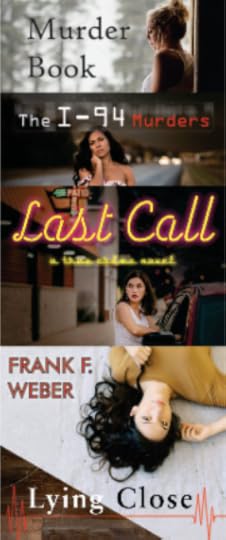
 Frank on Zoom with the Brainerd Lit Book Club
Frank on Zoom with the Brainerd Lit Book Club 
A chance meeting between Minneapolis Police Officer Xavier – Zave – Williams and Sadie changed his life and ended hers. Zave joins Investigator Jon Frederick as a black and white team reopening a cold case with a lot of gray—contaminated evidence, questionable court decisions, and two opposing hardened suspects. In the backdrop of modern-day Minneapolis, investigators are left to sort through the chaos, shootings, and political outrage to deliver justice to Sadie’s family. Black and Blue is an intense thriller about love, tenderness, and resilience, in an era when it’s easy to be callous.


 Sadie Sullivan was a salt of the earth, kind and loving young woman. She had a child at 15, she adopted out to a couple in her church. Sadie worked the midnight shift at a 24-hour Cub Foods in South Minneapolis so she could babysit for the couple and spend some time with her daughter. Unfortunately, on Friday, August 30, 2013, Sadie never made it to work.
Sadie Sullivan was a salt of the earth, kind and loving young woman. She had a child at 15, she adopted out to a couple in her church. Sadie worked the midnight shift at a 24-hour Cub Foods in South Minneapolis so she could babysit for the couple and spend some time with her daughter. Unfortunately, on Friday, August 30, 2013, Sadie never made it to work.

 Sadie’s fiancé was a white police officer, Bobby Long. A black heavyweight boxer, Flamin’ Ray Fury, was convicted of her rape and murder. The case brings to light Ray’s other crimes. In the years following Sadie’s death, it’s discovered Bobby isn’t such a stellar person himself. Bobby’s convicted of a brutal rape and incarcerated also.
Sadie’s fiancé was a white police officer, Bobby Long. A black heavyweight boxer, Flamin’ Ray Fury, was convicted of her rape and murder. The case brings to light Ray’s other crimes. In the years following Sadie’s death, it’s discovered Bobby isn’t such a stellar person himself. Bobby’s convicted of a brutal rape and incarcerated also. 

 Jon Frederick and Zave Williams work together in an intense investigation, confronting a gang and a militia, to bring Sadie’s family justice.
Jon Frederick and Zave Williams work together in an intense investigation, confronting a gang and a militia, to bring Sadie’s family justice. 
 Here is your chance to give your input on the front and back covers. I have to apologize to my readers here, as Burning Bridges cover model, Kloe Kapsner, will appear in this book as a new character, Lauren Herald, from Hillman. I needed a tall blonde young woman for this shot, and Kloe worked perfectly. “Lauren” works as a sketch artist and befriends Zave as the investigation progresses. Lauren may be a recurring character in future books. We will see how this goes.
Here is your chance to give your input on the front and back covers. I have to apologize to my readers here, as Burning Bridges cover model, Kloe Kapsner, will appear in this book as a new character, Lauren Herald, from Hillman. I needed a tall blonde young woman for this shot, and Kloe worked perfectly. “Lauren” works as a sketch artist and befriends Zave as the investigation progresses. Lauren may be a recurring character in future books. We will see how this goes. 

 It’s time for me to be done with this book. I think it’s very good. It’s 109,000 words, 407 pages so it will be my longest book. My last read through, I changed only 5 words. The catch is now how long will it take the printer to get it printed? Like every other business, printers are short of staff, so I won’t have the book until early 2022.
It’s time for me to be done with this book. I think it’s very good. It’s 109,000 words, 407 pages so it will be my longest book. My last read through, I changed only 5 words. The catch is now how long will it take the printer to get it printed? Like every other business, printers are short of staff, so I won’t have the book until early 2022. Thanks for listening,
Frank




Thank you all for the great book tour, finally coming to an end for 2021. I’m still open to speaking but have no further engagements this year at the present time.


 I ended with 3 great events talking to wonderful people in taprooms you’ll want to visit. It was a blast, as anticipated and I sold a ton of books. Thank you!
I ended with 3 great events talking to wonderful people in taprooms you’ll want to visit. It was a blast, as anticipated and I sold a ton of books. Thank you! 

 Frank on Zoom with the Brainerd Lit Book Club
Frank on Zoom with the Brainerd Lit Book Club 
Published on November 07, 2021 19:06
October 26, 2021
Why is Minneapolis a mess?

 In 2020, there were 82 homicides in Minneapolis, and in 2021, Minneapolis is on pace to approach the high of 1995. In 1995, the New York Times referred to Minneapolis as “the city of wakes,” due to its high homicide rate. But then the rate declined until 2020, and at this year’s pace we will break the record. There are reasons. Now we need to find solutions.
In 2020, there were 82 homicides in Minneapolis, and in 2021, Minneapolis is on pace to approach the high of 1995. In 1995, the New York Times referred to Minneapolis as “the city of wakes,” due to its high homicide rate. But then the rate declined until 2020, and at this year’s pace we will break the record. There are reasons. Now we need to find solutions.Why?
1. A concoction of cheap heroin and meth. People under the influence of a substance are the greatest risk to be violent. (7X more likely to be violent.)
 Oxycodone
OxycodoneBelow is a graph of opioid deaths in Minnesota.
 In the last 2 years, the number of overdose deaths in Minnesota has risen above this chart. In 2019 this number rose to 483, and in 2020 the number rose to 673.
In the last 2 years, the number of overdose deaths in Minnesota has risen above this chart. In 2019 this number rose to 483, and in 2020 the number rose to 673. Meth Below is the data on methamphetamine overdoses in the U.S. In 2020, we had the largest number of overdoses ever.
Meth Below is the data on methamphetamine overdoses in the U.S. In 2020, we had the largest number of overdoses ever.  2. A gang war between the Highs and the Lows. The Highs refer to the gangs on the north side of Minneapolis and the Lows are the gangs on the south side. All it takes is a few online insults and they load their automatic weapons and head to the streets.
2. A gang war between the Highs and the Lows. The Highs refer to the gangs on the north side of Minneapolis and the Lows are the gangs on the south side. All it takes is a few online insults and they load their automatic weapons and head to the streets.  3. A lack of police officers. The violence has resulted in Minneapolis being unable to replace police officers who leave. COVID has weakened the force further. Last week we had a night where we only had one squad car patrolling north Minneapolis, when there is supposed to be eight, and they really need fifteen. That one set of officers had to respond to shootings in three different areas. The community’s frustrated that officers are slow to respond. There simply aren’t enough officers.
3. A lack of police officers. The violence has resulted in Minneapolis being unable to replace police officers who leave. COVID has weakened the force further. Last week we had a night where we only had one squad car patrolling north Minneapolis, when there is supposed to be eight, and they really need fifteen. That one set of officers had to respond to shootings in three different areas. The community’s frustrated that officers are slow to respond. There simply aren’t enough officers.  4. Historic segregation. Housing covenants embedded in property deeds prevented minorities from obtaining housing loans to live in certain areas, resulting in forced segregation. This forced minorities into areas which lacked employment. Let’s take a look at the Hawthorne neighborhood in Minneapolis. (It was named after author Nathaniel Hawthorne. Nathaniel’s grandfather was a judge who presided over the Salem Witch Trials and good ol’ Nate attempted to dissociate himself from him. Ironically, Hawthorne’s books were described as dark romanticism, which might have been a good description of the Hawthorne neighborhood.) Half the Hawthorne neighborhood is African American in a state that’s 7% black. Only 44% of adults in Hawthorne were employed, which was the worst rate in Minneapolis. It’s not rocket science. When people have to live were there isn’t work, you have high unemployment.
4. Historic segregation. Housing covenants embedded in property deeds prevented minorities from obtaining housing loans to live in certain areas, resulting in forced segregation. This forced minorities into areas which lacked employment. Let’s take a look at the Hawthorne neighborhood in Minneapolis. (It was named after author Nathaniel Hawthorne. Nathaniel’s grandfather was a judge who presided over the Salem Witch Trials and good ol’ Nate attempted to dissociate himself from him. Ironically, Hawthorne’s books were described as dark romanticism, which might have been a good description of the Hawthorne neighborhood.) Half the Hawthorne neighborhood is African American in a state that’s 7% black. Only 44% of adults in Hawthorne were employed, which was the worst rate in Minneapolis. It’s not rocket science. When people have to live were there isn’t work, you have high unemployment. This ad was followed with the quote: “Premises shall not be sold, mortgaged, or leased to or occupied by any person or persons other than members of the Caucasian race.” Minneapolis Star 1923
This ad was followed with the quote: “Premises shall not be sold, mortgaged, or leased to or occupied by any person or persons other than members of the Caucasian race.” Minneapolis Star 19235. Problematic police officers. The problem is some officers deny the obvious and accept the improbable with black men. They pull over a black man and assume he stole the car and probably used it to rob a gas station at gunpoint—which is highly improbable. That assumption immediately makes it a life-or-death situation. The obvious is he’s just on his way home, like everybody else. We need cops policing the neighborhood, who know the people. They need to be part of the community.”
6. It’s also a pandemic issue. People don’t realize that the second year after the Spanish Flu pandemic in 1919 there was a spike in violent crime. When people are scared, and distrustful of the government, they are more likely to react violently. The government lied to Americans back in 1919, telling people the pandemic started in Spain, when the truth was the first documented case was in Kansas.

7. Illegal guns. Last year over 4000 illegal weapons were seized by police--double the number confiscated just 10 years earlier. You make people tense with a pandemic and unjustified killing, and then you give them guns, and they shoot each other.
Examples:
“Jerome Horton bought 33 guns in 4 months in 11 Twin Cities gunshops and sold them illegally, including the gun which killed 27-year-old Marquisha Wiley when gunfire erupted in a St. Paul bar on October 10, 2021.”
“In May of 2021, Sarah Jean Elwood bought 47 guns. Elwood is not a hunter or collector. The 33-year-old from Crystal was living in her car. She and her fiancé, Jeffrey Paul Jackson, were purchasing firearms from shops around the Twin Cities and selling them on the illegal market, federal prosecutors say. By the end of the month, three of the guns had already been confiscated by police in connection with shooting investigations, according to an affidavit underlying the felony federal charges.”
When you combine all of the above factors, the current mess isn’t particularly surprising. Now that the problem is identified, we can work on solutions. Part of the solution would be a project to revitalize the community by creating real jobs, rather than just giving money away. This has caused employee shortages throughout the nation.
A big part of the solution is local policing. My heart breaks for the parents who’ve lost their kids to these shootings. If it was my kid, I’d detain every person involved in a shooting until I had answers. But that would make me just another white guy unfairly incarcerating people. It needs to be done by people the local community knows and trusts.
In the midst of this craziness, we have to remind people that there are some great law enforcement officers. There are amazing officers like Charlie Adams and his Blue Bloods in North Minneapolis who work hard at trying to make a community, which needs more jobs, opportunities, and police officers, livable.


 Thank you readers! What an amazing couple weeks of presentations and selling tons of books! At the events, I ran out of the trilogy and Murder Quads, but I’ll be restocking them again this week. I had full taprooms at Angry Inch Brewing in Lakeville, Luce Line Brewing in Plymouth, Alloy Brewing in Coon Rapids and sold 71 books at the Hello Beauty Event in Little Falls. It was a blast and I look forward to returning to all when my next book is released!
Thank you readers! What an amazing couple weeks of presentations and selling tons of books! At the events, I ran out of the trilogy and Murder Quads, but I’ll be restocking them again this week. I had full taprooms at Angry Inch Brewing in Lakeville, Luce Line Brewing in Plymouth, Alloy Brewing in Coon Rapids and sold 71 books at the Hello Beauty Event in Little Falls. It was a blast and I look forward to returning to all when my next book is released! 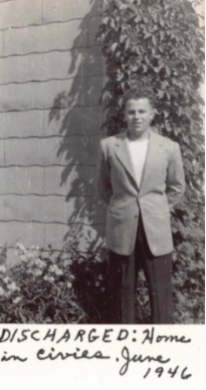 Leo Weber (dad)
Leo Weber (dad)  Frank Weber A blast from the past: Thank you Bill and Marie Weber, and to my classmates and spouse of great friend, and old friends for sharing time with me at these events. I give my dad, Leo, a little grief about his obsessiveness, but I have to tell you that after he died in 2005, his garage remained as it was until mom moved into assisted living a couple years ago. If you were logical, you could find anything in this garage. He had every type of screw, bolt, nut and nail, and if you walked through the garage, you realized it went from small to large. Unlike my garage, you never had to look long for anything, so all of his children continued to use it as a resource, for over decade, after his death. Dad would also get a laugh that I sign books Frank F. Weber, as I always thought it was funny he wrote Leo A. Weber on everything. The apple doesn’t fall far from the tree. My siblings and I still laugh at the box Dad labeled “Pending Item” which had a large plastic owl nailed to a board in it. I guess we will never know…
Frank Weber A blast from the past: Thank you Bill and Marie Weber, and to my classmates and spouse of great friend, and old friends for sharing time with me at these events. I give my dad, Leo, a little grief about his obsessiveness, but I have to tell you that after he died in 2005, his garage remained as it was until mom moved into assisted living a couple years ago. If you were logical, you could find anything in this garage. He had every type of screw, bolt, nut and nail, and if you walked through the garage, you realized it went from small to large. Unlike my garage, you never had to look long for anything, so all of his children continued to use it as a resource, for over decade, after his death. Dad would also get a laugh that I sign books Frank F. Weber, as I always thought it was funny he wrote Leo A. Weber on everything. The apple doesn’t fall far from the tree. My siblings and I still laugh at the box Dad labeled “Pending Item” which had a large plastic owl nailed to a board in it. I guess we will never know… 







 Susan Kimman is creating a short video we are going to put online advertising Burning Bridges. Here are some of the photographs I took during the shooting. I will post the video as soon as it’s completed.
Susan Kimman is creating a short video we are going to put online advertising Burning Bridges. Here are some of the photographs I took during the shooting. I will post the video as soon as it’s completed.Thanks for listening,
Frank


Published on October 26, 2021 13:44
October 11, 2021
What exactly are we celebrating on Columbus Day?
 Columbus didn’t discover America, any more than I discovered St. Cloud. Both had people living there when we arrived. Columbus was never in the area that is now the United States. If we are celebrating the arrival of the first Europeans in America, it wasn’t Columbus. There was a settlement in the North American island of Greenland by the Norse as early as 980 (more than 500 years before Columbus arrived in America). Leif Erikson set foot in Newfoundland, Canada, in 1001.
Columbus didn’t discover America, any more than I discovered St. Cloud. Both had people living there when we arrived. Columbus was never in the area that is now the United States. If we are celebrating the arrival of the first Europeans in America, it wasn’t Columbus. There was a settlement in the North American island of Greenland by the Norse as early as 980 (more than 500 years before Columbus arrived in America). Leif Erikson set foot in Newfoundland, Canada, in 1001.So let’s take a look at the life of Columbus.
Christopher Columbus was born in Genoa, Italy in 1451. In his personal life, Columbus married a Portuguese noblewoman Filipa Moniz Perestrelo in Lisbon, She was the daughter of a Portuguese Knight of Santiago and a member of the Order of Prince John. She died around 1484. How does Columbus, the son of a weaver, land her without a dowry? She was 25 years old. Columbus later took a Castilian mistress, Beatriz Enriquez de Arana, but never married her due to her lower social status. She raised both of his children, when he left town for the new world. He had one son with each woman. Though largely self-educated, Columbus was widely read in geography, astronomy, and history.
Columbus formulated a plan to seek a western sea passage to the East Indies, hoping to profit from the lucrative spice trade. Italy and Portugal felt Columbus underestimated the distance around the world to Asia so they wouldn’t fund his venture. (They didn’t know the American continent would also be in the way.) It was known the world was round at this time, despite myths that suggest otherwise. Following persistent lobbying, Queen Isabella I and King Ferdinand II of Spain agreed to sponsor his journey. Columbus left Castile, Spain, in August 1492 with three ships.
After a stopover in the Canary Islands, Columbus made landfall in the Americas on October 12, 1492 (later celebrated as Columbus Day). His landing place was an island in the Bahamas. Columbus subsequently visited the islands now known as Cuba and Hispaniola, establishing a colony in what is now Haiti—the first European settlement in the Americas since the Norse colonies nearly 500 years earlier. He returned to Castile, Spain, in early 1493, bringing a number of captive natives (Indian prisoners) with him. Columbus would eventually complete four voyages across the Atlantic Ocean providing the first European contact with the Caribbean, Central America, and South America.
 In his next 3 voyages to the New World, he explored the Lesser Antilles (the small islands south of Puerto Rico in the Caribbean) in 1493, Trinidad and the northern coast of South America in 1498, and the eastern coast of Central America in 1502. Columbus continued to seek a passage to the East Indies. It’s not clear that he ever honestly knew he had landed on a landmass separate from Asia, as he never clearly renounced his belief that he had reached the Far East. The country of Colombia is named after him.
In his next 3 voyages to the New World, he explored the Lesser Antilles (the small islands south of Puerto Rico in the Caribbean) in 1493, Trinidad and the northern coast of South America in 1498, and the eastern coast of Central America in 1502. Columbus continued to seek a passage to the East Indies. It’s not clear that he ever honestly knew he had landed on a landmass separate from Asia, as he never clearly renounced his belief that he had reached the Far East. The country of Colombia is named after him.Was Columbus an idiot? In some ways he was both intelligent and lucky.
Columbus had a valuable understanding of trade winds which made him the master of the Atlantic. During his first voyage in 1492, he took advantage of the brisk trade winds from the east, called "easterlies." His first land sighting (and landing point) was the island of San Salvador in El Salvador. To return to Spain, against this prevailing wind, would have required a procedure referred to as “beating.” Beating involves moving the ship zig-zag into the upwind. (No sailing vessel can move directly upwind.) Beating allows the vessel to advance indirectly upward. Using this method would have exhausted his food and drinking water. By sailing back directly west initially, he skirted the “horse latitudes” of the Mid-Atlantic. The “horse latitudes” are dangerous for sail ships since it is incredibly calm (little wind).
 Columbus risked running into a tropical storm, which by chance, he avoided. Columbus then took advantage of the curving trade winds northeast to the middle latitudes of the Atlantic where he was able to catch the “westerlies” which blow to the coast of Western Europe.
Columbus risked running into a tropical storm, which by chance, he avoided. Columbus then took advantage of the curving trade winds northeast to the middle latitudes of the Atlantic where he was able to catch the “westerlies” which blow to the coast of Western Europe. Taino women Was Columbus a good person? No. His quest for gold and brutal treatment of the Taino people, who were incredibly kind to him, reflect this. Historically, Columbus was never researched accurately. In all fairness, some of this information only became available in 2006, when a 48 page report was found in the archives in the city of Simancas, Spain.
Taino women Was Columbus a good person? No. His quest for gold and brutal treatment of the Taino people, who were incredibly kind to him, reflect this. Historically, Columbus was never researched accurately. In all fairness, some of this information only became available in 2006, when a 48 page report was found in the archives in the city of Simancas, Spain.1. During Columbus’ maiden voyage he took somewhere between 10-25 Natives as prisoners. Only 7 or 8 arrived in Spain alive.
2. Columbus wrote in a letter to a friend about one of the indigenous women he captured:
"While I was in the boat, I captured a very beautiful Carib woman, whom the said Lord Admiral gave to me. When I had taken her to my cabin she was naked—as was their custom. I was filled with a desire to take my pleasure with her and attempted to satisfy my desire. She was unwilling, and so treated me with her nails that I wished I had never begun. But—to cut a long story short—I then took a piece of rope and whipped her soundly, and she let forth such incredible screams that you would not have believed your ears. Eventually we came to such terms, I assure you, that you would have thought that she had been brought up in a school for whores."
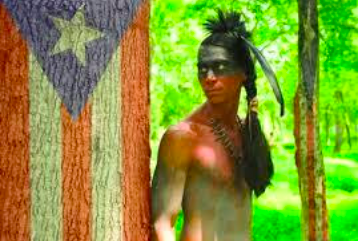 Taino man By 1499, accusations of tyranny and incompetence by Columbus had reached Queen Isabella and King Ferdinand. They responded by removing him from power as Governor of Hispaniola. They were told that Columbus regularly used torture and mutilation as punishment. The 48-page report, found in 2006 in the national archive in the Spanish city of Simancas, contains testimonies from 23 people, including both enemies and supporters of Columbus, about the treatment of colonial subjects by Columbus and his brothers during his seven-year rule.
Taino man By 1499, accusations of tyranny and incompetence by Columbus had reached Queen Isabella and King Ferdinand. They responded by removing him from power as Governor of Hispaniola. They were told that Columbus regularly used torture and mutilation as punishment. The 48-page report, found in 2006 in the national archive in the Spanish city of Simancas, contains testimonies from 23 people, including both enemies and supporters of Columbus, about the treatment of colonial subjects by Columbus and his brothers during his seven-year rule.
3. According to the report, Columbus once punished a man found guilty of stealing corn by having his ears and nose cut off and then selling him into slavery.
4. Columbus congratulated his brother Bartolomeo on "defending the family" when Bartolomeo ordered a woman paraded naked through the streets and then had her tongue cut out for suggesting that Columbus was of lowly birth.
5. Columbus put down native unrest and revolt by first ordering a brutal crackdown in which many natives were killed, and then parading their dismembered bodies through the streets in order to discourage further rebellion.
Consuelo Varela, a Spanish historian who has seen the document, told journalists: "Even those who loved him had to admit the atrocities that had taken place."
Columbus and his brothers were arrested and imprisoned upon their return to Spain. They lingered in jail for six weeks before King Ferdinand ordered their release. Not long after, the king and queen summoned Columbus and his brothers to the Alhambra palace in Granada. There, the royal couple heard the brothers' pleas; restored their freedom and wealth; and, after much persuasion, agreed to fund Columbus's fourth voyage. But Columbus would never again be allowed to serve as governor.
 The Taino Indians- Native Americans of the Caribbean 6. The Taino people from Hispaniola suffered severely as a result of the Spanish presence. Their numbers were once estimated to be 3 million. 85% were dead by the early 1500’s. (Remember Columbus arrived in 1492.) The Spaniards removed men from villages to work in gold mines and colonial plantations. This kept the Taíno from planting the crops that had fed them for centuries. They began to starve; many thousands fell prey to smallpox, measles and other European diseases for which they had no immunity; some committed suicide to avoid subjugation; and hundreds fell in fighting with the Spaniards. By 1514, (in just 2 decades) half of Spanish men had taken Taino wives. They mixed with African slaves, (who would eventually win independence in Haiti), forming a new, tri-racial Creole culture. To quote a historian, “Very few Indians were left, 50 years after Columbus arrived.”
The Taino Indians- Native Americans of the Caribbean 6. The Taino people from Hispaniola suffered severely as a result of the Spanish presence. Their numbers were once estimated to be 3 million. 85% were dead by the early 1500’s. (Remember Columbus arrived in 1492.) The Spaniards removed men from villages to work in gold mines and colonial plantations. This kept the Taíno from planting the crops that had fed them for centuries. They began to starve; many thousands fell prey to smallpox, measles and other European diseases for which they had no immunity; some committed suicide to avoid subjugation; and hundreds fell in fighting with the Spaniards. By 1514, (in just 2 decades) half of Spanish men had taken Taino wives. They mixed with African slaves, (who would eventually win independence in Haiti), forming a new, tri-racial Creole culture. To quote a historian, “Very few Indians were left, 50 years after Columbus arrived.”  Taino woman
Taino womanThe demise of Columbus
During a violent storm on his first return voyage, Columbus, then 41, suffered an attack of influenza and other fevers, bleeding from the eyes, temporary blindness and prolonged attacks of gout. The attacks increased in duration and severity, sometimes leaving Columbus bedridden for months at a time, and culminated in his death 14 years later. There are some suggestions he experienced intestinal infections as a result of sexually transmitted disease, but it’s more likely the infection was due to poor sanitation and improper food preparation on his ocean voyage. Columbus died in Valladolid, Spain on May 20, 1506. (Valladolid was the capital of Spain in the 1600’s.)
New York Governor, Andrew Cuomo, recently said Columbus was an important figure for Italian Americans, symbolizing their contribution to New York, and for that reason he opposes removal of the statues. I don’t know any Italian Americans whose pride rests on the contributions of Columbus. When you think about it, Columbus is the only person (other than Jesus) who never lived in the U.S. who has a holiday. And there isn’t much of a comparison between the two.
I believe critical thinking is a process of reasonable inquiry in which solutions to ill-structured problems are constructed; adequacy of solutions is evaluated in terms of what is reasonable or probable based on current evidence and is reevaluated when relevant new evidence, perspectives, or tools of inquiry become available. New evidence is available. We need to adjust our beliefs accordingly.
Thanks for listening,
Frank
Published on October 11, 2021 08:26
September 29, 2021
The Maroon Man
Nov. 11, 1985 –
Michelle Wilkerson—“you are amazing!” 25-year-old Michelle Wilkerson accepted a ride from a man late at night. He drove her to a nearby orange grove. When she refused his sexual advances, he beat her and shot her twice in the head. Michelle escaped his truck, ran into a ditch and crawled into a culvert -- and then through it. (The culvert was only 18 inches in diameter, and it was half filled with mud.) This escape was important, as it left her attacker searching the wrong side of the road.

 After exiting the culvert, Michelle made it to an office in the grove. She called the police on a phone used by workers, located outside the building. Despite struggling to remain conscious, she found a truck that had been left in the grove, and turned the lights on, so the police could find her. Michelle was barely coherent when the police arrived, but she survived. The officers spoke of Michelle’s tremendous will to live. She was able to give officers a description of her attacker and his truck.
After exiting the culvert, Michelle made it to an office in the grove. She called the police on a phone used by workers, located outside the building. Despite struggling to remain conscious, she found a truck that had been left in the grove, and turned the lights on, so the police could find her. Michelle was barely coherent when the police arrived, but she survived. The officers spoke of Michelle’s tremendous will to live. She was able to give officers a description of her attacker and his truck.
A pick-up, which matched the description, was found stuck on a beach, just down the road, two hours later. It was owned by Robert Brashers.
 Robert Brashers
Robert Brashers
In 1986, Robert Brashers was convicted of attempted 2nd-degree murder for his assault on Michelle. Brashers served only 3 years of a 15-year prison sentence.
Robert Brashers was released from prison in March 1989 and began dating the woman who became his wife.
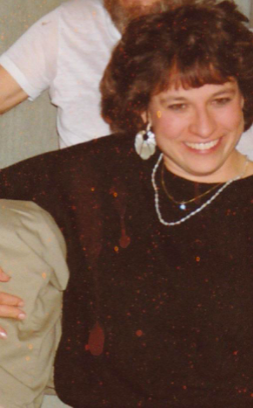 April 4, 1990 –
April 4, 1990 –
Genevieve “Jenny” Zitricki, 28, lived alone in an apartment in Greenville, South Carolina. On April 6, after she failed to show up for her job at Michelin Tire Manufacturing, she was found dead in her apartment. She had been strangled, beaten and sexually assaulted; her killer scrawled a message in lipstick on the mirror designed to confuse police. "She had no enemies — no one had any idea who would do something like this."
The trail on Jenny’s murder went cold, even though investigators in three states investigate more than 1,000 leads. (This murder would go unsolved for decades.)
Feb. 18, 1992 –
Robert Brashers was arrested in Cobb County, Georgia, for possession of a stolen pistol and possession of a stolen vehicle. Police said he also had a scanner, police jacket, burglary tools and a fake Tennessee license. As a felon, he wasn’t legally able to possess a gun. Brashers was sentenced to 5 years in prison and was released in February of 1997.
March 11, 1997 –
Robert Brashers knocked on the door of a home near Memphis, Tennessee and rambled on about his wife losing her purse. He went to his vehicle and returned with a gun. Brashers entered the home, where 4 females and a baby were inside. Holding them at gunpoint, Brashers restrained the 4 females. He selected the youngest among them, a 14-year-old girl who was staying at the home with friends, and sexually assaulted her. This case would remain unsolved until 2017, when the DNA from that rape was finally entered into CODIS. (Many states are behind in entering DNA on old cases.)
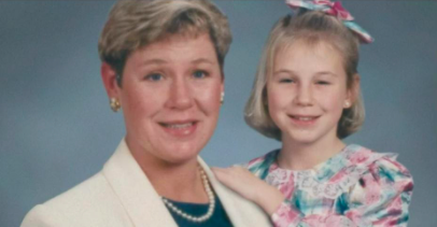 Sherri and Megan Scherer
Sherri and Megan Scherer
March 28, 1998 –
In a rural home near Portageville, Missouri. (A town about 155 miles Southeast of St. Louis.) 38-year-old Sherri Scherer and her 12-year-old daughter, Megan, were home hanging out laundry. Sherri’s husband, Tony, and son, Steven, worked on a nearby farm. As they headed home, Tony called Sherri and offered to pick up a pizza for dinner. He and Steven were further delayed by a car accident on the gravel road leading to their house.
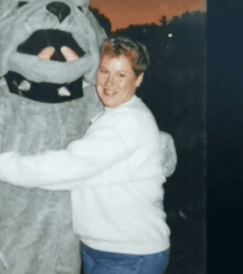
 This time when they called home, the phone wasn't answered. When they arrived, Sherri and Megan lay dead on the floor, each gagged with a sock. The 12-year-old girl had been sexually assaulted. It was said, "Megan was full of life — she loved to dance." Robert Brashers had struck again. These homicides would also go unsolved for two decades. The science of DNA was still young in 1998, and at the time no match was found.
This time when they called home, the phone wasn't answered. When they arrived, Sherri and Megan lay dead on the floor, each gagged with a sock. The 12-year-old girl had been sexually assaulted. It was said, "Megan was full of life — she loved to dance." Robert Brashers had struck again. These homicides would also go unsolved for two decades. The science of DNA was still young in 1998, and at the time no match was found.
While Tony and Steven mourned, 42 miles away (the same day), Brashers attempted to force his way into the residence of a young woman in Dyersburg, Tennessee. She was home caring for a small child. She fought hard and successfully blocked him from entering. In the struggle, he managed to shoot her in the arm. She survived and gave police a description, which they used to produce a composite sketch. Ballistic evidence connected the bullet fired in Dyersburg to those that killed Sherri and Megan Scherer.
 April 12, 1998 – Brashers was arrested while breaking in the home of a single woman for whom he had previously done handy work. Police said Brashers had cut the phone lines to the home and was armed. He also had a video camera and other tools with him. Brashers was taken into custody but later released. Robert married the mother of his children as soon as he was released. (The children weren’t invited.) As his spouse, she couldn’t be made to testify against him. Robert Brashers skipped bond, but still managed to sneak contact with his wife and children. It all ultimately ended with the Super 8 Motel standoff described below.
April 12, 1998 – Brashers was arrested while breaking in the home of a single woman for whom he had previously done handy work. Police said Brashers had cut the phone lines to the home and was armed. He also had a video camera and other tools with him. Brashers was taken into custody but later released. Robert married the mother of his children as soon as he was released. (The children weren’t invited.) As his spouse, she couldn’t be made to testify against him. Robert Brashers skipped bond, but still managed to sneak contact with his wife and children. It all ultimately ended with the Super 8 Motel standoff described below.
 January 13, 1999 –
January 13, 1999 –
Officers located a vehicle with a stolen tag in a parking lot of a Super 8 motel in Kennett, Missouri. Officers were directed to a room where Robert Brashers was located. Brashers was found hiding under a bed and armed with a gun. After four hours of negotiation, police officers escorted his wife and daughters out, and Brashers shot himself. He died six days later. Ironically, investigators now believe Robert Brashers thought the police were coming after him for the murders. All they had him on was he had a vehicle with a stolen tag. The murders wouldn’t be solved for another 18 years.
3 people were murdered, and their killer was now dead. No witnesses. How do we solve this?
In 2006, investigators resubmitted the DNA evidence to the Highway Patrol Crime Laboratory. A full suspect DNA profile was entered into the database called CODIS. A match was made to the Scherer case. (Keep in mind, states are behind with entering DNA from old cases into the system.
In 2017, a second hit came after investigators in Memphis entered the DNA from the rape of the 14-year-old girl, back in 1997. That rape kit sat in storage for 20 years before being processed and uploaded in 2017.
 In 2018, Investigators sought the services of Parabon NanoLabs (Parabon), a DNA technology company. Parabon's Snapshot® DNA Analysis technology combines DNA testing and genetic genealogy analysis to establish the relationship between an individual and their ancestors. Parasson's process led to the identification of Robert Eugene Brashers, a white male, date of birth March 13, 1958, as a suspect for the aforementioned cases. Brashers has been deceased since 1999. Investigators obtained DNA samples from Mr. Brashers' surviving family members. Traditional forensic STR test results indicated Mr. Brashers was, with very little doubt, responsible for the crimes.
In 2018, Investigators sought the services of Parabon NanoLabs (Parabon), a DNA technology company. Parabon's Snapshot® DNA Analysis technology combines DNA testing and genetic genealogy analysis to establish the relationship between an individual and their ancestors. Parasson's process led to the identification of Robert Eugene Brashers, a white male, date of birth March 13, 1958, as a suspect for the aforementioned cases. Brashers has been deceased since 1999. Investigators obtained DNA samples from Mr. Brashers' surviving family members. Traditional forensic STR test results indicated Mr. Brashers was, with very little doubt, responsible for the crimes.
Full confirmation occurred when Brasher's remains were exhumed. Further tests confirmed without a doubt he was the perpetrator.
 Robert Brashers with his family. Think of the incredible sadness he put on his family. I wish them the very best.
Robert Brashers with his family. Think of the incredible sadness he put on his family. I wish them the very best.
Robert Eugene Brashers (March 13, 1958 – January 13, 1999) was a serial killer and rapist. In 2018, he was identified by CeCe Moore, chief genetic genealogist at Parabon, via genetic genealogy website as the murderer of Genevieve Zitricki in Greenville, South Carolina in 1990, the rapist of a 14-year-old girl in Memphis, Tennessee in 1997, and the killer of mother and daughter Sherri and Megan Scherer in Portageville, Missouri in 1998.
Forensic genealogy: Combines public DNA databases in hope of discovering probable relatives of suspects. With enough matches, they can construct a family tree and narrow down a list of suspects. This time, they got lucky. When the study was completed, it could only have been 1 possible individual—Robert Brashers. (This is unusual. Typically, it narrows down to a list of possibilities.). The man who had ended three lives and irreparably damaged so many others had a name at last: Robert Eugene Brashers, a man born in Newport News, Virginia, in 1958, who died at his own hands, hiding under a bed in a Super 8 Motel, in Kennett, Missouri, on January 13, 1999.
Of particular interest to profilers about this case is that Robert Brashers victims all had the exact same hair style. A hairstyle worn by his wife. Further, Robert and his wife had a tumultuous relationship. His daughter spoke of an incident where Robert was going to take his daughter to the liquor store, and her mom stepped in and told them to get out of the car. A fight ensued, where Robert threw his wife on the ground and was punching her. She managed to land a solid kick to his groin, and when he rolled off, she got on top of him and beat him. Robert ended up apologizing to her and the children.
Michelle Wilkerson survived being shot in the head twice and put Robert Brashers behind bars. He never should have been released after serving only 3 years. Life would be different for at least three families if he would have served the time he deserved.
Thanks for listening,
Frank
Have a variety of book events coming up, including speaking to a book club on Murder Book tomorrow night.
 In addition to library and taproom events.
In addition to library and taproom events. 
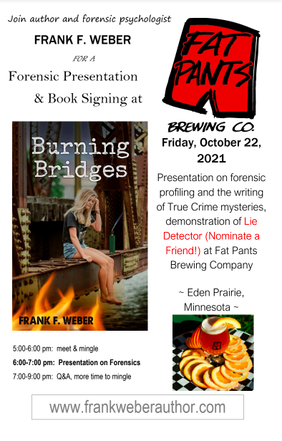

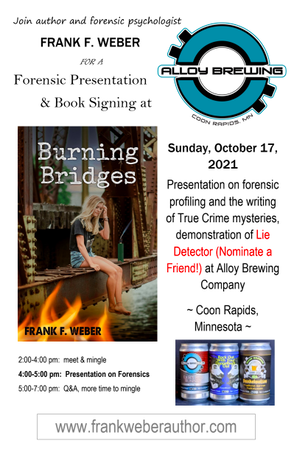
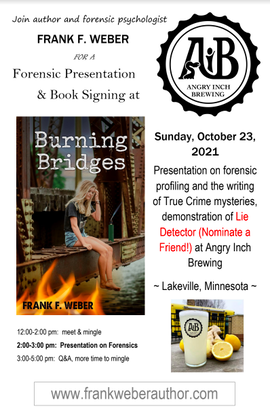
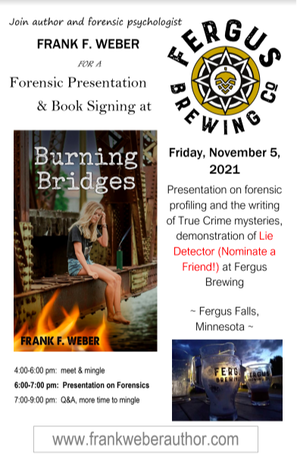

 Frank Speaking to "Last Tuesday Book Club" in Brainerd/Baxter
Frank Speaking to "Last Tuesday Book Club" in Brainerd/Baxter
Michelle Wilkerson—“you are amazing!” 25-year-old Michelle Wilkerson accepted a ride from a man late at night. He drove her to a nearby orange grove. When she refused his sexual advances, he beat her and shot her twice in the head. Michelle escaped his truck, ran into a ditch and crawled into a culvert -- and then through it. (The culvert was only 18 inches in diameter, and it was half filled with mud.) This escape was important, as it left her attacker searching the wrong side of the road.

 After exiting the culvert, Michelle made it to an office in the grove. She called the police on a phone used by workers, located outside the building. Despite struggling to remain conscious, she found a truck that had been left in the grove, and turned the lights on, so the police could find her. Michelle was barely coherent when the police arrived, but she survived. The officers spoke of Michelle’s tremendous will to live. She was able to give officers a description of her attacker and his truck.
After exiting the culvert, Michelle made it to an office in the grove. She called the police on a phone used by workers, located outside the building. Despite struggling to remain conscious, she found a truck that had been left in the grove, and turned the lights on, so the police could find her. Michelle was barely coherent when the police arrived, but she survived. The officers spoke of Michelle’s tremendous will to live. She was able to give officers a description of her attacker and his truck.A pick-up, which matched the description, was found stuck on a beach, just down the road, two hours later. It was owned by Robert Brashers.
 Robert Brashers
Robert BrashersIn 1986, Robert Brashers was convicted of attempted 2nd-degree murder for his assault on Michelle. Brashers served only 3 years of a 15-year prison sentence.
Robert Brashers was released from prison in March 1989 and began dating the woman who became his wife.

 April 4, 1990 –
April 4, 1990 – Genevieve “Jenny” Zitricki, 28, lived alone in an apartment in Greenville, South Carolina. On April 6, after she failed to show up for her job at Michelin Tire Manufacturing, she was found dead in her apartment. She had been strangled, beaten and sexually assaulted; her killer scrawled a message in lipstick on the mirror designed to confuse police. "She had no enemies — no one had any idea who would do something like this."
The trail on Jenny’s murder went cold, even though investigators in three states investigate more than 1,000 leads. (This murder would go unsolved for decades.)
Feb. 18, 1992 –
Robert Brashers was arrested in Cobb County, Georgia, for possession of a stolen pistol and possession of a stolen vehicle. Police said he also had a scanner, police jacket, burglary tools and a fake Tennessee license. As a felon, he wasn’t legally able to possess a gun. Brashers was sentenced to 5 years in prison and was released in February of 1997.
March 11, 1997 –
Robert Brashers knocked on the door of a home near Memphis, Tennessee and rambled on about his wife losing her purse. He went to his vehicle and returned with a gun. Brashers entered the home, where 4 females and a baby were inside. Holding them at gunpoint, Brashers restrained the 4 females. He selected the youngest among them, a 14-year-old girl who was staying at the home with friends, and sexually assaulted her. This case would remain unsolved until 2017, when the DNA from that rape was finally entered into CODIS. (Many states are behind in entering DNA on old cases.)
 Sherri and Megan Scherer
Sherri and Megan SchererMarch 28, 1998 –
In a rural home near Portageville, Missouri. (A town about 155 miles Southeast of St. Louis.) 38-year-old Sherri Scherer and her 12-year-old daughter, Megan, were home hanging out laundry. Sherri’s husband, Tony, and son, Steven, worked on a nearby farm. As they headed home, Tony called Sherri and offered to pick up a pizza for dinner. He and Steven were further delayed by a car accident on the gravel road leading to their house.

 This time when they called home, the phone wasn't answered. When they arrived, Sherri and Megan lay dead on the floor, each gagged with a sock. The 12-year-old girl had been sexually assaulted. It was said, "Megan was full of life — she loved to dance." Robert Brashers had struck again. These homicides would also go unsolved for two decades. The science of DNA was still young in 1998, and at the time no match was found.
This time when they called home, the phone wasn't answered. When they arrived, Sherri and Megan lay dead on the floor, each gagged with a sock. The 12-year-old girl had been sexually assaulted. It was said, "Megan was full of life — she loved to dance." Robert Brashers had struck again. These homicides would also go unsolved for two decades. The science of DNA was still young in 1998, and at the time no match was found.While Tony and Steven mourned, 42 miles away (the same day), Brashers attempted to force his way into the residence of a young woman in Dyersburg, Tennessee. She was home caring for a small child. She fought hard and successfully blocked him from entering. In the struggle, he managed to shoot her in the arm. She survived and gave police a description, which they used to produce a composite sketch. Ballistic evidence connected the bullet fired in Dyersburg to those that killed Sherri and Megan Scherer.
 April 12, 1998 – Brashers was arrested while breaking in the home of a single woman for whom he had previously done handy work. Police said Brashers had cut the phone lines to the home and was armed. He also had a video camera and other tools with him. Brashers was taken into custody but later released. Robert married the mother of his children as soon as he was released. (The children weren’t invited.) As his spouse, she couldn’t be made to testify against him. Robert Brashers skipped bond, but still managed to sneak contact with his wife and children. It all ultimately ended with the Super 8 Motel standoff described below.
April 12, 1998 – Brashers was arrested while breaking in the home of a single woman for whom he had previously done handy work. Police said Brashers had cut the phone lines to the home and was armed. He also had a video camera and other tools with him. Brashers was taken into custody but later released. Robert married the mother of his children as soon as he was released. (The children weren’t invited.) As his spouse, she couldn’t be made to testify against him. Robert Brashers skipped bond, but still managed to sneak contact with his wife and children. It all ultimately ended with the Super 8 Motel standoff described below. January 13, 1999 –
January 13, 1999 – Officers located a vehicle with a stolen tag in a parking lot of a Super 8 motel in Kennett, Missouri. Officers were directed to a room where Robert Brashers was located. Brashers was found hiding under a bed and armed with a gun. After four hours of negotiation, police officers escorted his wife and daughters out, and Brashers shot himself. He died six days later. Ironically, investigators now believe Robert Brashers thought the police were coming after him for the murders. All they had him on was he had a vehicle with a stolen tag. The murders wouldn’t be solved for another 18 years.
3 people were murdered, and their killer was now dead. No witnesses. How do we solve this?
In 2006, investigators resubmitted the DNA evidence to the Highway Patrol Crime Laboratory. A full suspect DNA profile was entered into the database called CODIS. A match was made to the Scherer case. (Keep in mind, states are behind with entering DNA from old cases into the system.
In 2017, a second hit came after investigators in Memphis entered the DNA from the rape of the 14-year-old girl, back in 1997. That rape kit sat in storage for 20 years before being processed and uploaded in 2017.
 In 2018, Investigators sought the services of Parabon NanoLabs (Parabon), a DNA technology company. Parabon's Snapshot® DNA Analysis technology combines DNA testing and genetic genealogy analysis to establish the relationship between an individual and their ancestors. Parasson's process led to the identification of Robert Eugene Brashers, a white male, date of birth March 13, 1958, as a suspect for the aforementioned cases. Brashers has been deceased since 1999. Investigators obtained DNA samples from Mr. Brashers' surviving family members. Traditional forensic STR test results indicated Mr. Brashers was, with very little doubt, responsible for the crimes.
In 2018, Investigators sought the services of Parabon NanoLabs (Parabon), a DNA technology company. Parabon's Snapshot® DNA Analysis technology combines DNA testing and genetic genealogy analysis to establish the relationship between an individual and their ancestors. Parasson's process led to the identification of Robert Eugene Brashers, a white male, date of birth March 13, 1958, as a suspect for the aforementioned cases. Brashers has been deceased since 1999. Investigators obtained DNA samples from Mr. Brashers' surviving family members. Traditional forensic STR test results indicated Mr. Brashers was, with very little doubt, responsible for the crimes.Full confirmation occurred when Brasher's remains were exhumed. Further tests confirmed without a doubt he was the perpetrator.
 Robert Brashers with his family. Think of the incredible sadness he put on his family. I wish them the very best.
Robert Brashers with his family. Think of the incredible sadness he put on his family. I wish them the very best. Robert Eugene Brashers (March 13, 1958 – January 13, 1999) was a serial killer and rapist. In 2018, he was identified by CeCe Moore, chief genetic genealogist at Parabon, via genetic genealogy website as the murderer of Genevieve Zitricki in Greenville, South Carolina in 1990, the rapist of a 14-year-old girl in Memphis, Tennessee in 1997, and the killer of mother and daughter Sherri and Megan Scherer in Portageville, Missouri in 1998.
Forensic genealogy: Combines public DNA databases in hope of discovering probable relatives of suspects. With enough matches, they can construct a family tree and narrow down a list of suspects. This time, they got lucky. When the study was completed, it could only have been 1 possible individual—Robert Brashers. (This is unusual. Typically, it narrows down to a list of possibilities.). The man who had ended three lives and irreparably damaged so many others had a name at last: Robert Eugene Brashers, a man born in Newport News, Virginia, in 1958, who died at his own hands, hiding under a bed in a Super 8 Motel, in Kennett, Missouri, on January 13, 1999.
Of particular interest to profilers about this case is that Robert Brashers victims all had the exact same hair style. A hairstyle worn by his wife. Further, Robert and his wife had a tumultuous relationship. His daughter spoke of an incident where Robert was going to take his daughter to the liquor store, and her mom stepped in and told them to get out of the car. A fight ensued, where Robert threw his wife on the ground and was punching her. She managed to land a solid kick to his groin, and when he rolled off, she got on top of him and beat him. Robert ended up apologizing to her and the children.
Michelle Wilkerson survived being shot in the head twice and put Robert Brashers behind bars. He never should have been released after serving only 3 years. Life would be different for at least three families if he would have served the time he deserved.
Thanks for listening,
Frank
Have a variety of book events coming up, including speaking to a book club on Murder Book tomorrow night.
 In addition to library and taproom events.
In addition to library and taproom events. 






 Frank Speaking to "Last Tuesday Book Club" in Brainerd/Baxter
Frank Speaking to "Last Tuesday Book Club" in Brainerd/Baxter
Published on September 29, 2021 10:44
September 7, 2021
Nursery Rhymes
Some of the nursery rhymes we heard as children have morbid histories. Here is an example:
Mary Mary quite contrary, how does your garden grow?
With silver bells and cockle shells and pretty maids all in a row.
The origin of this rhyme: The rhyme was created in reference to Queen Mary I (from the house of Tudor). Mary was the daughter of Henry the VIII’s first marriage. Upset that she wasn’t a son, he had the marriage expunged (or basically annulled), which took Mary out of being a potential successor to the throne. When Henry VIII died, he named his grandniece, Lady Jane Grey, heir to the throne. Jane’s mom, Francis, was Henry VIII’s niece (daughter of his sister). Frances Grey felt Jane’s quiet gentle nature was weak, so she held her to strict domineering regime and was cruel to her (to toughen her up). Instead of being hardened, Jane simply viewed her mother as abusive. Henry VIII decided to bypass Frances, and name her oldest daughter, Jane, queen.
 Lady Jane Grey
Lady Jane Grey
The reluctant Queen:
Jane never wanted to be queen and she would only be queen for 9 days. There were forces at work. Jane was Protestant and Mary was Catholic. Mary had strong sources of support, and soon the marriage between Henry VIII and Catherine of Aragon (her mother) was reinstated as legitimate. This made Mary queen. She came to be known as “Bloody Mary” as she had Jane beheaded and over 300 Protestants executed as religious dissenters.
A strange Alliance:
While waiting to be executed a Catholic Priest was sent to Jane to convert her to Catholicism before she died. Jane never converted, but a close friendship was formed between Mary and the Priest, and she asked him to be with her until the very end. Jane is considered a Protestant martyr. Facing death in the London tower, the executioner asked forgiveness from Jane and she gave it to him. Decapitation was considered an honorable form of death at the time.
 Queen Mary Getting back to the rhyme:
Queen Mary Getting back to the rhyme:
Mary Mary quite contrary how does your garden grow?
This is a direct reference to the queen known as “bloody Mary,” for putting to death numerous Protestants.
With silver bells and cockleshells
This is a reference to torture devices. The silver bells refer to cork screws and the cockleshells refer to clamps put on the genitals for torture.
and pretty maids all in a row.
This is a reference to Lady Jane Grey and the numerous women lined up to be executed.
Supporters of Mary’s reign point out that her successor, Queen Elizabeth I, ordered the execution of 800 Catholic rebels. In my opinion, this doesn’t make any of it okay.
 Queen Elizabeth I (not a happy camper) Regarding the morbid nursery rhyme, keep in mind that peasants had little power in feudal times. People were executed all the time for defying the throne. Perhaps they found some satisfaction, in creating rhymes that insulted the leaders they couldn’t publicly criticize.
Queen Elizabeth I (not a happy camper) Regarding the morbid nursery rhyme, keep in mind that peasants had little power in feudal times. People were executed all the time for defying the throne. Perhaps they found some satisfaction, in creating rhymes that insulted the leaders they couldn’t publicly criticize.
Baa Baa Black Sheep,
Have you any wool?
Yes, sir, yes, sir,
Three bags full;
One for the master,
One for the dame,
And one for the little boy
Who lives down the lane.
 In 1272, King Edward I imposed taxes on wool to pay for his military ventures. The rhyme is a satirical look at how the farmer ends up with very little. 1/3 went for taxes and 1/3 went to the church, but only 1/3 went to the little boy who had tiredly attended and protected the flock. The earliest versions stated, “none for the little boy who cries down the lane.”
In 1272, King Edward I imposed taxes on wool to pay for his military ventures. The rhyme is a satirical look at how the farmer ends up with very little. 1/3 went for taxes and 1/3 went to the church, but only 1/3 went to the little boy who had tiredly attended and protected the flock. The earliest versions stated, “none for the little boy who cries down the lane.”
Peter, Peter pumpkin eater,
Had a wife but couldn't keep her;
He put her in a pumpkin shell
And there he kept her very well.
History suggests that Peter’s wife was a prostitute and because he couldn’t keep her home he murdered her. He may have buried her in a pumpkin patch. The earliest versions of the poem ended with “and left the mice to eat her.”
And then there’s one rhyme assumed to be disturbing, but actually isn’t.
Ring-a-round the rosie,
A pocket full of posies,
Ashes! Ashes!
We all fall down
In 1949, a theory emerged that the rhyme was based on the great plague, and even though this has largely been accepted as fact, the best evidence suggests this probably isn’t true. It was simply a child’s singing and dancing game from th 1700’s, where the slowest child becomes the rose tree, in the center of the ring. The early versions had the children curtsey, rather than fall down. There are versions in many countries, most which don’t say “Ashes, Ashes,” but rather make a sneezing sound.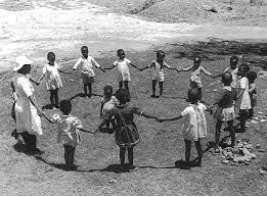
 COVID 19 Vaccine
COVID 19 Vaccine
I have no desire to make you do anything. I make decisions based on empirical evidence (evidence supported by legitimate sources) so I will offer you some information.
 Professional medical organizations serving people of reproductive age, including adolescents, emphasize that there is no evidence that COVID-19 vaccination causes a loss of fertility. Do what you wish. I’m just telling you what we know at the present time.
Professional medical organizations serving people of reproductive age, including adolescents, emphasize that there is no evidence that COVID-19 vaccination causes a loss of fertility. Do what you wish. I’m just telling you what we know at the present time.  The RNA COVD vaccine does not contain the virus, so it will not give you COVID. Instead, it contains proteins that prepare your body to fight the virus so, if you get COVID, it won’t be as severe. Some people say it isn’t technically a vaccine because it doesn’t contain the virus. I will define “vaccine” as something that creates proteins to fight a disease so I can still refer to it as the vaccine (the term being used globally).
The RNA COVD vaccine does not contain the virus, so it will not give you COVID. Instead, it contains proteins that prepare your body to fight the virus so, if you get COVID, it won’t be as severe. Some people say it isn’t technically a vaccine because it doesn’t contain the virus. I will define “vaccine” as something that creates proteins to fight a disease so I can still refer to it as the vaccine (the term being used globally).
If you get the vaccine, you can still transmit COVID. Think of COVID like an allergy to latex. If you spill latex paint on your skin, you could rub that paint on to someone else, but if you don’t have an allergy to latex, it won’t kill you. (If you have the vaccine proteins in your system you could still get COVID, but it probably isn’t going to kill you.)

 Keep in mind that nothing is 100%, and this is where the data gets confusing. Even with the vaccine, you could still potentially die from COVD. But here are the odds:
Keep in mind that nothing is 100%, and this is where the data gets confusing. Even with the vaccine, you could still potentially die from COVD. But here are the odds:
In the last 15,000 COVID deaths, 99.8% were unvaccinated victims. .2% were vaccinated, and these victims typically had additional underlying medical conditions that weakened their immune system. In other words, you could still die from COVID if you are vaccinated, but you are 500 X more likely to die from COVID if you are unvaccinated. Make your own decision…
Back to forensics next week.
At least some good came out of it…
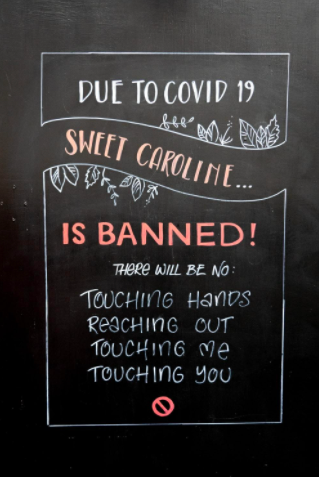 Thanks for listening,
Thanks for listening,
Frank I just wanna be with you Chris Rea.
 Mitch and Preston recording at Weber Studio Hall.
Mitch and Preston recording at Weber Studio Hall. 
Mary Mary quite contrary, how does your garden grow?
With silver bells and cockle shells and pretty maids all in a row.
The origin of this rhyme: The rhyme was created in reference to Queen Mary I (from the house of Tudor). Mary was the daughter of Henry the VIII’s first marriage. Upset that she wasn’t a son, he had the marriage expunged (or basically annulled), which took Mary out of being a potential successor to the throne. When Henry VIII died, he named his grandniece, Lady Jane Grey, heir to the throne. Jane’s mom, Francis, was Henry VIII’s niece (daughter of his sister). Frances Grey felt Jane’s quiet gentle nature was weak, so she held her to strict domineering regime and was cruel to her (to toughen her up). Instead of being hardened, Jane simply viewed her mother as abusive. Henry VIII decided to bypass Frances, and name her oldest daughter, Jane, queen.
 Lady Jane Grey
Lady Jane GreyThe reluctant Queen:
Jane never wanted to be queen and she would only be queen for 9 days. There were forces at work. Jane was Protestant and Mary was Catholic. Mary had strong sources of support, and soon the marriage between Henry VIII and Catherine of Aragon (her mother) was reinstated as legitimate. This made Mary queen. She came to be known as “Bloody Mary” as she had Jane beheaded and over 300 Protestants executed as religious dissenters.
A strange Alliance:
While waiting to be executed a Catholic Priest was sent to Jane to convert her to Catholicism before she died. Jane never converted, but a close friendship was formed between Mary and the Priest, and she asked him to be with her until the very end. Jane is considered a Protestant martyr. Facing death in the London tower, the executioner asked forgiveness from Jane and she gave it to him. Decapitation was considered an honorable form of death at the time.
 Queen Mary Getting back to the rhyme:
Queen Mary Getting back to the rhyme:Mary Mary quite contrary how does your garden grow?
This is a direct reference to the queen known as “bloody Mary,” for putting to death numerous Protestants.
With silver bells and cockleshells
This is a reference to torture devices. The silver bells refer to cork screws and the cockleshells refer to clamps put on the genitals for torture.
and pretty maids all in a row.
This is a reference to Lady Jane Grey and the numerous women lined up to be executed.
Supporters of Mary’s reign point out that her successor, Queen Elizabeth I, ordered the execution of 800 Catholic rebels. In my opinion, this doesn’t make any of it okay.
 Queen Elizabeth I (not a happy camper) Regarding the morbid nursery rhyme, keep in mind that peasants had little power in feudal times. People were executed all the time for defying the throne. Perhaps they found some satisfaction, in creating rhymes that insulted the leaders they couldn’t publicly criticize.
Queen Elizabeth I (not a happy camper) Regarding the morbid nursery rhyme, keep in mind that peasants had little power in feudal times. People were executed all the time for defying the throne. Perhaps they found some satisfaction, in creating rhymes that insulted the leaders they couldn’t publicly criticize. Baa Baa Black Sheep,
Have you any wool?
Yes, sir, yes, sir,
Three bags full;
One for the master,
One for the dame,
And one for the little boy
Who lives down the lane.
 In 1272, King Edward I imposed taxes on wool to pay for his military ventures. The rhyme is a satirical look at how the farmer ends up with very little. 1/3 went for taxes and 1/3 went to the church, but only 1/3 went to the little boy who had tiredly attended and protected the flock. The earliest versions stated, “none for the little boy who cries down the lane.”
In 1272, King Edward I imposed taxes on wool to pay for his military ventures. The rhyme is a satirical look at how the farmer ends up with very little. 1/3 went for taxes and 1/3 went to the church, but only 1/3 went to the little boy who had tiredly attended and protected the flock. The earliest versions stated, “none for the little boy who cries down the lane.”Peter, Peter pumpkin eater,
Had a wife but couldn't keep her;
He put her in a pumpkin shell
And there he kept her very well.
History suggests that Peter’s wife was a prostitute and because he couldn’t keep her home he murdered her. He may have buried her in a pumpkin patch. The earliest versions of the poem ended with “and left the mice to eat her.”
And then there’s one rhyme assumed to be disturbing, but actually isn’t.
Ring-a-round the rosie,
A pocket full of posies,
Ashes! Ashes!
We all fall down
In 1949, a theory emerged that the rhyme was based on the great plague, and even though this has largely been accepted as fact, the best evidence suggests this probably isn’t true. It was simply a child’s singing and dancing game from th 1700’s, where the slowest child becomes the rose tree, in the center of the ring. The early versions had the children curtsey, rather than fall down. There are versions in many countries, most which don’t say “Ashes, Ashes,” but rather make a sneezing sound.

 COVID 19 Vaccine
COVID 19 VaccineI have no desire to make you do anything. I make decisions based on empirical evidence (evidence supported by legitimate sources) so I will offer you some information.
 Professional medical organizations serving people of reproductive age, including adolescents, emphasize that there is no evidence that COVID-19 vaccination causes a loss of fertility. Do what you wish. I’m just telling you what we know at the present time.
Professional medical organizations serving people of reproductive age, including adolescents, emphasize that there is no evidence that COVID-19 vaccination causes a loss of fertility. Do what you wish. I’m just telling you what we know at the present time.  The RNA COVD vaccine does not contain the virus, so it will not give you COVID. Instead, it contains proteins that prepare your body to fight the virus so, if you get COVID, it won’t be as severe. Some people say it isn’t technically a vaccine because it doesn’t contain the virus. I will define “vaccine” as something that creates proteins to fight a disease so I can still refer to it as the vaccine (the term being used globally).
The RNA COVD vaccine does not contain the virus, so it will not give you COVID. Instead, it contains proteins that prepare your body to fight the virus so, if you get COVID, it won’t be as severe. Some people say it isn’t technically a vaccine because it doesn’t contain the virus. I will define “vaccine” as something that creates proteins to fight a disease so I can still refer to it as the vaccine (the term being used globally). If you get the vaccine, you can still transmit COVID. Think of COVID like an allergy to latex. If you spill latex paint on your skin, you could rub that paint on to someone else, but if you don’t have an allergy to latex, it won’t kill you. (If you have the vaccine proteins in your system you could still get COVID, but it probably isn’t going to kill you.)

 Keep in mind that nothing is 100%, and this is where the data gets confusing. Even with the vaccine, you could still potentially die from COVD. But here are the odds:
Keep in mind that nothing is 100%, and this is where the data gets confusing. Even with the vaccine, you could still potentially die from COVD. But here are the odds:In the last 15,000 COVID deaths, 99.8% were unvaccinated victims. .2% were vaccinated, and these victims typically had additional underlying medical conditions that weakened their immune system. In other words, you could still die from COVID if you are vaccinated, but you are 500 X more likely to die from COVID if you are unvaccinated. Make your own decision…
Back to forensics next week.
At least some good came out of it…
 Thanks for listening,
Thanks for listening,Frank I just wanna be with you Chris Rea.

 Mitch and Preston recording at Weber Studio Hall.
Mitch and Preston recording at Weber Studio Hall. 
Published on September 07, 2021 18:58
August 30, 2021
Coincidence
I believe in coincidence…
On investigative shows, you frequently hear the statement, “I don’t believe in coincidence.” There are many times innocent people have been convicted because coincidence placed them high on the suspect list. An argument with someone, just before their life was taken, and then not having an alibi, is a bad situation to be in, even if you’re not a killer.
 I like Joe Kendra but disagree with his comment about not believing in coincidence. My favorite Kendra quote is: “After I saw what he’d done, I thought this guy had to be the dumbest man on the planet. When I met with him, I realized he’s the dumbest man on 3 or 4 planets.”
I like Joe Kendra but disagree with his comment about not believing in coincidence. My favorite Kendra quote is: “After I saw what he’d done, I thought this guy had to be the dumbest man on the planet. When I met with him, I realized he’s the dumbest man on 3 or 4 planets.”
Here’s an example:
1983, Seabrook, Texas, 20-year-old Susan Eads is murdered after leaving work as a waitress. Susan was a graduate of Clear Lake High School who was living with her mother and working 2 jobs to make ends meet.
 A bearded cowboy was hitting on Susan where she was worked as a waitress. He had asked her to dance, and she turned him away. Her naked body was discovered the next day by students driving a busy highway Texas. She had been sexually assaulted and strangled with her clothing.
A bearded cowboy was hitting on Susan where she was worked as a waitress. He had asked her to dance, and she turned him away. Her naked body was discovered the next day by students driving a busy highway Texas. She had been sexually assaulted and strangled with her clothing.
Travis Scoggins was arrested for a rape and murder in a neighboring county. Coincidence or not? Travis wore a cowboy hat and had a dark beard and moustache. Initially, Scoggins denied knowing Susan. He failed a polygraph examination, but they didn’t have enough evidence to convict him. Scoggins then confessed to her murder. He told investigators Susan was parked in the back parking lot, which was correct. But when they asked about the details of the murder, Scoggins didn’t seem to be aware of them. It was concluded that Scoggins had confessed, because he was already looking at life in prison for a separate rape and murder, and he wanted more attention.
Even after Scoggins was incarcerated, someone was calling Susan’s mother and telling her he had naked pictures of Susan. Back in the 1980’s you had to keep someone on the phone for certain period of time before you could trace the call. (This is no longer necessary.) The caller ended each call, just before it could be traced. Shirley took the harassing calls several times a week, hoping to get some evidence on the man who killed her daughter. Within 1 year after Susan’s murder, the phone calls ended, and it was concluded, the caller wasn’t the killer—just some sick man harassing a grieving mother.
 Susan Ead’s murder went unsolved for 40 years.
Susan Ead’s murder went unsolved for 40 years.

 Anthony Allen Shore Anthony Allen Shore, serial killer, had been living within one mile of Susan’s home. Shore’s victims had been strangled to death using a tourniquet, the same way Susan had been killed. Shore had a dark beard and mustache at the time. Shore had worked with Susan’s uncle. Shore also worked for the telephone company and he knew how to avoid being traced.
Anthony Allen Shore Anthony Allen Shore, serial killer, had been living within one mile of Susan’s home. Shore’s victims had been strangled to death using a tourniquet, the same way Susan had been killed. Shore had a dark beard and mustache at the time. Shore had worked with Susan’s uncle. Shore also worked for the telephone company and he knew how to avoid being traced. 
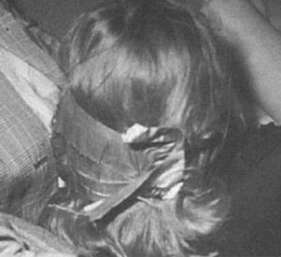
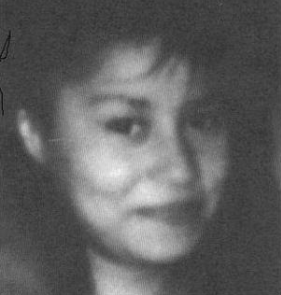


 Victims in order: Laura Trembley, Maria del Carmen, Salma Janske, Diane Reboller and Dana Sanchez. The 6th is Melissa Trotter, who is another suspected victim of Shores.
Victims in order: Laura Trembley, Maria del Carmen, Salma Janske, Diane Reboller and Dana Sanchez. The 6th is Melissa Trotter, who is another suspected victim of Shores.
Anthony Shore had committed 4 similar murders and lived less than a mile away from Susan. 1986: Laura Trembley, 15, had been attacked on her way to school.
1992: Maria del Carmen Estrada, 21, was a Mexican immigrant working as a nanny. Her body was found behind a Dairy Queen.
1993: Salma Janske 14, was attacked in her home, but she was the one who escaped alive.
1994: Diana Rebollar 9, was attacked walking home from a grocery store.
1995: Dana Sanchez 16, accepted a ride from Shore and he killed her after she refused his advances. Was it all a coincidence?
When investigators interviewed Shore, he said, “Look at the picture. My victims don’t look like this. I like the way little girls look. I’m not interested in her.” Still Susan was only 5 feet tall and weighed 90 pounds. Investigators were convinced it had to be Anthony Shore. Anthony Shore had attacked females ages 9, 14, 15, 16 and 21. Shore was convicted of the murders after he was accused of sexually abusing his two daughters. A DNA sample was taken, which would link him to the murders. Shore was executed by lethal injection in 2018.
The fact that Susan Ead had a serial killer living less than a mile away, who worked with her uncle and for the phone company was all a coincidence.
DNA testing was performed on Susan Eade’s clothing and much to the surprise of the investigators, they discovered, as Shore had insisted, he wasn’t her killer. They compared the sample to Travis Scoggins, and he wasn’t her killer. So they began the ancestry DNA tracing (Forensic Genealogy) and ultimately the DNA was traced back to one man.
 Picture of Arthur Davis, and the drawing by the police sketch artist of the man who followed Susan the night she disappeared.
Picture of Arthur Davis, and the drawing by the police sketch artist of the man who followed Susan the night she disappeared.
DNA from Susan’s clothing was traced back to Arthur Raymond Davis. His photo was an exact match to the drawing turned in by witnesses, who said they saw a bearded cowboy following her to her car. Davis was now dead. He died 3 months after Susan Eads was killed, in a car accident, 1 mile away from where Susan’s body was found. Davis was hospitalized for 1 month following the accident, before finally succumbing to his lethal injuries. Susan’s abandoned car was found by a nearby boat store on Nasa Road 1. It appeared that a struggle occurred in the back seat of the car. Davis was a fishing boat captain in the area. Susan had been sexually assaulted and strangled, likely after refusing Davis’ unwanted advances.
If it wouldn’t be for DNA testing, this case would have been closed based on the assumption Susan Ead had been killed by a serial killer. Instead, she was killed by a man with a large ego, who lost it when she refused his advances.
Narcissistic injury is the leading cause of homicide. A narcissistic injury occurs when narcissists react negatively to perceived criticism or judgment. The underlying belief is that the victim didn’t have the right to turn him away, or insult him, or cheat on him. Most narcissists walk away after a few insulting comments. Some go into a murderous rage. Afghanistan people reaching to U.S. troops with their credentials in hope of receiving help.
Afghanistan people reaching to U.S. troops with their credentials in hope of receiving help.
A special thanks goes out to our military, who lost soldiers this past week simply trying to rescue people safely away from harm’s way. We ask a lot from military families and never thank them enough. It is why I always stand for the national anthem.
Thanks for listening,
Frank
While the live version is good, I miss the percussion intro of the stick sliding on the fish (guiro) on the original recording.
 Listen to the intro of next Gimme Shelter video to hear it. I had it as my ring tone for awhile, before switching to the intro to Bon Jovi’s Living on a Prayer.
Listen to the intro of next Gimme Shelter video to hear it. I had it as my ring tone for awhile, before switching to the intro to Bon Jovi’s Living on a Prayer. 


On investigative shows, you frequently hear the statement, “I don’t believe in coincidence.” There are many times innocent people have been convicted because coincidence placed them high on the suspect list. An argument with someone, just before their life was taken, and then not having an alibi, is a bad situation to be in, even if you’re not a killer.
 I like Joe Kendra but disagree with his comment about not believing in coincidence. My favorite Kendra quote is: “After I saw what he’d done, I thought this guy had to be the dumbest man on the planet. When I met with him, I realized he’s the dumbest man on 3 or 4 planets.”
I like Joe Kendra but disagree with his comment about not believing in coincidence. My favorite Kendra quote is: “After I saw what he’d done, I thought this guy had to be the dumbest man on the planet. When I met with him, I realized he’s the dumbest man on 3 or 4 planets.”Here’s an example:
1983, Seabrook, Texas, 20-year-old Susan Eads is murdered after leaving work as a waitress. Susan was a graduate of Clear Lake High School who was living with her mother and working 2 jobs to make ends meet.
 A bearded cowboy was hitting on Susan where she was worked as a waitress. He had asked her to dance, and she turned him away. Her naked body was discovered the next day by students driving a busy highway Texas. She had been sexually assaulted and strangled with her clothing.
A bearded cowboy was hitting on Susan where she was worked as a waitress. He had asked her to dance, and she turned him away. Her naked body was discovered the next day by students driving a busy highway Texas. She had been sexually assaulted and strangled with her clothing.Travis Scoggins was arrested for a rape and murder in a neighboring county. Coincidence or not? Travis wore a cowboy hat and had a dark beard and moustache. Initially, Scoggins denied knowing Susan. He failed a polygraph examination, but they didn’t have enough evidence to convict him. Scoggins then confessed to her murder. He told investigators Susan was parked in the back parking lot, which was correct. But when they asked about the details of the murder, Scoggins didn’t seem to be aware of them. It was concluded that Scoggins had confessed, because he was already looking at life in prison for a separate rape and murder, and he wanted more attention.
Even after Scoggins was incarcerated, someone was calling Susan’s mother and telling her he had naked pictures of Susan. Back in the 1980’s you had to keep someone on the phone for certain period of time before you could trace the call. (This is no longer necessary.) The caller ended each call, just before it could be traced. Shirley took the harassing calls several times a week, hoping to get some evidence on the man who killed her daughter. Within 1 year after Susan’s murder, the phone calls ended, and it was concluded, the caller wasn’t the killer—just some sick man harassing a grieving mother.

 Susan Ead’s murder went unsolved for 40 years.
Susan Ead’s murder went unsolved for 40 years.
 Anthony Allen Shore Anthony Allen Shore, serial killer, had been living within one mile of Susan’s home. Shore’s victims had been strangled to death using a tourniquet, the same way Susan had been killed. Shore had a dark beard and mustache at the time. Shore had worked with Susan’s uncle. Shore also worked for the telephone company and he knew how to avoid being traced.
Anthony Allen Shore Anthony Allen Shore, serial killer, had been living within one mile of Susan’s home. Shore’s victims had been strangled to death using a tourniquet, the same way Susan had been killed. Shore had a dark beard and mustache at the time. Shore had worked with Susan’s uncle. Shore also worked for the telephone company and he knew how to avoid being traced. 




 Victims in order: Laura Trembley, Maria del Carmen, Salma Janske, Diane Reboller and Dana Sanchez. The 6th is Melissa Trotter, who is another suspected victim of Shores.
Victims in order: Laura Trembley, Maria del Carmen, Salma Janske, Diane Reboller and Dana Sanchez. The 6th is Melissa Trotter, who is another suspected victim of Shores. Anthony Shore had committed 4 similar murders and lived less than a mile away from Susan. 1986: Laura Trembley, 15, had been attacked on her way to school.
1992: Maria del Carmen Estrada, 21, was a Mexican immigrant working as a nanny. Her body was found behind a Dairy Queen.
1993: Salma Janske 14, was attacked in her home, but she was the one who escaped alive.
1994: Diana Rebollar 9, was attacked walking home from a grocery store.
1995: Dana Sanchez 16, accepted a ride from Shore and he killed her after she refused his advances. Was it all a coincidence?
When investigators interviewed Shore, he said, “Look at the picture. My victims don’t look like this. I like the way little girls look. I’m not interested in her.” Still Susan was only 5 feet tall and weighed 90 pounds. Investigators were convinced it had to be Anthony Shore. Anthony Shore had attacked females ages 9, 14, 15, 16 and 21. Shore was convicted of the murders after he was accused of sexually abusing his two daughters. A DNA sample was taken, which would link him to the murders. Shore was executed by lethal injection in 2018.
The fact that Susan Ead had a serial killer living less than a mile away, who worked with her uncle and for the phone company was all a coincidence.
DNA testing was performed on Susan Eade’s clothing and much to the surprise of the investigators, they discovered, as Shore had insisted, he wasn’t her killer. They compared the sample to Travis Scoggins, and he wasn’t her killer. So they began the ancestry DNA tracing (Forensic Genealogy) and ultimately the DNA was traced back to one man.
 Picture of Arthur Davis, and the drawing by the police sketch artist of the man who followed Susan the night she disappeared.
Picture of Arthur Davis, and the drawing by the police sketch artist of the man who followed Susan the night she disappeared.DNA from Susan’s clothing was traced back to Arthur Raymond Davis. His photo was an exact match to the drawing turned in by witnesses, who said they saw a bearded cowboy following her to her car. Davis was now dead. He died 3 months after Susan Eads was killed, in a car accident, 1 mile away from where Susan’s body was found. Davis was hospitalized for 1 month following the accident, before finally succumbing to his lethal injuries. Susan’s abandoned car was found by a nearby boat store on Nasa Road 1. It appeared that a struggle occurred in the back seat of the car. Davis was a fishing boat captain in the area. Susan had been sexually assaulted and strangled, likely after refusing Davis’ unwanted advances.
If it wouldn’t be for DNA testing, this case would have been closed based on the assumption Susan Ead had been killed by a serial killer. Instead, she was killed by a man with a large ego, who lost it when she refused his advances.
Narcissistic injury is the leading cause of homicide. A narcissistic injury occurs when narcissists react negatively to perceived criticism or judgment. The underlying belief is that the victim didn’t have the right to turn him away, or insult him, or cheat on him. Most narcissists walk away after a few insulting comments. Some go into a murderous rage.
 Afghanistan people reaching to U.S. troops with their credentials in hope of receiving help.
Afghanistan people reaching to U.S. troops with their credentials in hope of receiving help.A special thanks goes out to our military, who lost soldiers this past week simply trying to rescue people safely away from harm’s way. We ask a lot from military families and never thank them enough. It is why I always stand for the national anthem.
Thanks for listening,
Frank
While the live version is good, I miss the percussion intro of the stick sliding on the fish (guiro) on the original recording.
 Listen to the intro of next Gimme Shelter video to hear it. I had it as my ring tone for awhile, before switching to the intro to Bon Jovi’s Living on a Prayer.
Listen to the intro of next Gimme Shelter video to hear it. I had it as my ring tone for awhile, before switching to the intro to Bon Jovi’s Living on a Prayer. 


Published on August 30, 2021 07:28
August 22, 2021
Texas Book Tour
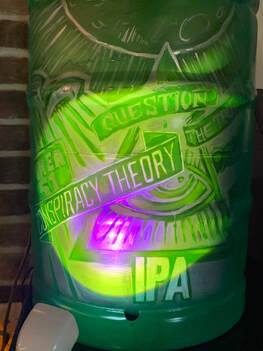


 The Texas book tour was a success! I presented at Southern Star in Conroe, Austin Beerworks in Austin, Rahr Brewing in Fort Worth, and the Oskar Blues Brewery in Austin. Sold books and shared stories with great people at every site. Southern Star has decided to name a beer after a story I told. I will let you know when it is brewed. My presentation at Southern Star was listed in 365 things to do in Houston!
The Texas book tour was a success! I presented at Southern Star in Conroe, Austin Beerworks in Austin, Rahr Brewing in Fort Worth, and the Oskar Blues Brewery in Austin. Sold books and shared stories with great people at every site. Southern Star has decided to name a beer after a story I told. I will let you know when it is brewed. My presentation at Southern Star was listed in 365 things to do in Houston! 






 Cheap Trick was at Billy Bob's when we were in Fort Worth My brother, Charlie, traveled with me. We brought our guitars and gloves for downtime and found a great place to eat every day. The music in Austin was amazing! We found the best places by talking to the locals.
Cheap Trick was at Billy Bob's when we were in Fort Worth My brother, Charlie, traveled with me. We brought our guitars and gloves for downtime and found a great place to eat every day. The music in Austin was amazing! We found the best places by talking to the locals.  The Saxon Pub had a rhythm and blues band with 3 great singers. It’s only seats about 50 people but they get great musicians to stop in and play, like Willie Neson, Taylor Swift, Jason Isbell and Kris Kristofferson.
The Saxon Pub had a rhythm and blues band with 3 great singers. It’s only seats about 50 people but they get great musicians to stop in and play, like Willie Neson, Taylor Swift, Jason Isbell and Kris Kristofferson.

 The Continental had great country music.
The Continental had great country music. Antones has some great blues bands.
Antones has some great blues bands. The picture on the right is of Rainey Street, which honestly was a bit of a disappointment to me. When I visited Rainey Street a decade ago, there were guitars and fiddles on each porch playing music. Now its lots of lights and piped in music. Its more popular than ever, which was likely the goal, but it was generally less appealing to me. Bangers was still good!
The picture on the right is of Rainey Street, which honestly was a bit of a disappointment to me. When I visited Rainey Street a decade ago, there were guitars and fiddles on each porch playing music. Now its lots of lights and piped in music. Its more popular than ever, which was likely the goal, but it was generally less appealing to me. Bangers was still good! We ate at the Salt Lick in Driftwood, Texas (near Austin). Bobby Flay said it was the best barbecue he’s ever eaten, so I had to check it out. It did not disappoint!
We ate at the Salt Lick in Driftwood, Texas (near Austin). Bobby Flay said it was the best barbecue he’s ever eaten, so I had to check it out. It did not disappoint! We went to a Thai cooking school and had an amazing meal.I found a place called Flower Child, which apparently is a chain of health food restaurants, which was great! But the best was going to Galveston with my son, Shane, buying fresh seafood from the gulf and grilling it with Shane and Rachael’s family.
We went to a Thai cooking school and had an amazing meal.I found a place called Flower Child, which apparently is a chain of health food restaurants, which was great! But the best was going to Galveston with my son, Shane, buying fresh seafood from the gulf and grilling it with Shane and Rachael’s family.
 I hit the ground running with book sales when I returned. At Battle Lake I averaged signing and selling a book every 90 seconds from the time I arrived, 9:00 a.m. until the event ended at 4:00 p.m. which meant it was all I did for those 7 hours. Left hungry, but happy!
I hit the ground running with book sales when I returned. At Battle Lake I averaged signing and selling a book every 90 seconds from the time I arrived, 9:00 a.m. until the event ended at 4:00 p.m. which meant it was all I did for those 7 hours. Left hungry, but happy! The Friends of the Brainerd Public Library host an amazing event called Wine & Words, at Grandview featuring 5 national authors. The event sold out in a day even though this year it was held 3 consecutive days to a different audience. I was blessed to be one of the five authors who spoke this year.
The Friends of the Brainerd Public Library host an amazing event called Wine & Words, at Grandview featuring 5 national authors. The event sold out in a day even though this year it was held 3 consecutive days to a different audience. I was blessed to be one of the five authors who spoke this year. Back to forensics next blog!
Back to forensics next blog!Thanks for listening!
Frank
The auditory version of Burning Bridges is now available through Amazon. Thank you actors Jonathan Strait and Sarah Brands for your excellent work!
Published on August 22, 2021 17:06
July 20, 2021
Who killed Christine Schultz?
In the middle of a lawsuit against the Milwaukee police department the prime witness for the case, dubbed “Bambi,” is convicted of murder.
 Christine Schultz (November 15, 1990 -May 28, 1981). Mother of two. Christine was one of four children born to Earl and Alice Pennings in Menominee, Michigan.
Christine Schultz (November 15, 1990 -May 28, 1981). Mother of two. Christine was one of four children born to Earl and Alice Pennings in Menominee, Michigan.
Milwaukee, Wisconsin, An 11-year-old Shawn Schultz calls the police and says a man with red ponytail wig, broke into his house and shot his mother. 30-year-old Christine Schultz is found with a gag in her mouth and hands tied. The son reports the man wore in a green track suit, and a red woman’s wig. Christine is the ex-wife of police officer Fred Schultz. Fred is one of the first officers on the scene. He and his partner had been drinking, on duty, when they responded to the call. (It’s not surprising he immediately responded to the call, when you consider his son was living at this address.) But bizarrely, Fred tried jumping out of his partner’s car after leaving the scene in what appeared to be a suicide attempt. The murder weapon was a gun Fred Schultz had kept at his new home. Fred didn’t shoot Christine as he had an established alibi.
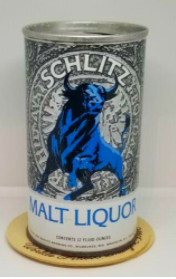
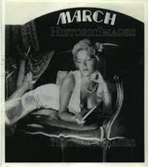
 Schlitz, out of Milwaukee, was the largest beer producer in the U.S. in 1902. It was touted as “the beer that made Milwaukee famous.”
Schlitz, out of Milwaukee, was the largest beer producer in the U.S. in 1902. It was touted as “the beer that made Milwaukee famous.”
Fred Schultz’s new wife, Lawrencia “Laurie” Bembenek had publicly expressed anger that Christine Schultz was getting half of Fred’s checks in alimony. Laurie was arrested for the murder. She was eventually called “Bambi,” after it was discovered she had once posed as a pin up girl, and was Miss March, on a Schlitz beer calendar. Laurie worked briefly as a waitress at the Lake Geneva, Wisconsin Playboy Club in Milwaukee. At the time of her arrest, she was working for Marquette University's Public Safety Department in downtown Milwaukee.
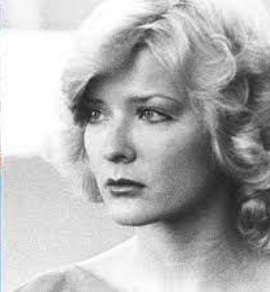 Prior to her arrest, Laurie Bembenek was fired by the Milwaukee Police Department and had gone on to sue the department, claiming that it engaged in sexual discrimination and other illegal activities. Laurie had attended a concert where her friend, Judy Zess, smoked marijuana. Even though Laurie denied she had smoked marijuana and there was no proof of it, she was fired based on the report of an anonymous tipster. After Laurie was fired, she was made aware of pictures of male police officers dancing naked in both Gordon park, and in the police officer’s hangout, Tracks Tavern, and none of them were fired. Laurie complained, but the Milwaukee police took no action. However, the Justice Department picked up Laurie’s case and accused the Milwaukee police department of hiring females (which they were receiving federal grant money for doing) but then firing them when their probationary period ended.) However, when Laurie was arrested for murder, the investigation ended as they had lost their prime witness.
Prior to her arrest, Laurie Bembenek was fired by the Milwaukee Police Department and had gone on to sue the department, claiming that it engaged in sexual discrimination and other illegal activities. Laurie had attended a concert where her friend, Judy Zess, smoked marijuana. Even though Laurie denied she had smoked marijuana and there was no proof of it, she was fired based on the report of an anonymous tipster. After Laurie was fired, she was made aware of pictures of male police officers dancing naked in both Gordon park, and in the police officer’s hangout, Tracks Tavern, and none of them were fired. Laurie complained, but the Milwaukee police took no action. However, the Justice Department picked up Laurie’s case and accused the Milwaukee police department of hiring females (which they were receiving federal grant money for doing) but then firing them when their probationary period ended.) However, when Laurie was arrested for murder, the investigation ended as they had lost their prime witness. 
 Laurie Bemenek escaped from Taycheedah Correctional Institution in Wisconsin by squeezing out a window at night. People who believed in her innocence created t-shirts that read, “Run Bambi Run.” After she was recaptured in Thunder Bay, Ontario, Canada, she never spoke to the man who had helped her escape again. A criticism of Laurie throughout the investigation was that she was not a particularly warm person. At times, she was described as cold and calculating. But this, in itself, doesn’t make someone a killer.
Laurie Bemenek escaped from Taycheedah Correctional Institution in Wisconsin by squeezing out a window at night. People who believed in her innocence created t-shirts that read, “Run Bambi Run.” After she was recaptured in Thunder Bay, Ontario, Canada, she never spoke to the man who had helped her escape again. A criticism of Laurie throughout the investigation was that she was not a particularly warm person. At times, she was described as cold and calculating. But this, in itself, doesn’t make someone a killer.
Reasons for a new trial:
Laurie Bembenek was the one who had released the naked pictures of the police officers in the park in Milwaukee. Laurie felt the Milwaukee police had framed her to make her lawsuit go away. A witness against her, Judy Zess, reported she had been pressured by the police to frame Laurie. Four forensic experts stated the alleged murder weapon, didn’t fire the lethal shot. Further there was no record that a blonde hair of hers (used as evidence at the trial), was actually collected at the murder scene. Here is the statement from the medical examiner:
“I recovered no blonde or red hairs of any length or texture ... [A]ll of the hairs I recovered from the body were brown and were grossly identical to the hair of the victim ... [I] do not like to suggest that evidence was altered in any way, but I can find no logical explanation for what amounted to the appearance of blonde hair in an envelope that contained no such hair at the time it was sealed by me.”
Subsequently, upon her return to incarceration, she was awarded a new trial.

 Laurie Bembenck’s arrest in Canada Fred Schultz Laure was offered a deal where if she pled guilty to second-degree murder, they would give her credit for time served and she’d be immediately released from incarceration. She accepted the offer. Four years after, she sought to have the sentence overturned. There are investigators in Milwaukee who remain convinced of Laurie’s guilt. Her now ex-husband, Fred Schultz, initially claimed Laurie was innocent, but would later state she was guilty.
Laurie Bembenck’s arrest in Canada Fred Schultz Laure was offered a deal where if she pled guilty to second-degree murder, they would give her credit for time served and she’d be immediately released from incarceration. She accepted the offer. Four years after, she sought to have the sentence overturned. There are investigators in Milwaukee who remain convinced of Laurie’s guilt. Her now ex-husband, Fred Schultz, initially claimed Laurie was innocent, but would later state she was guilty.
Reasons to question Laurie Bembenek’s conviction:35 days after the murder, Fred Horenberger, breaks into Judy Zess’s apartment in a green track suit and red wig and robbed her. (The same outfit Christina’s son said the killer was wearing.) Laurie accused her husband Fred Schultz, of hiring Fred Hornberger to kill his ex-wife. Hornberger turns his gun on himself and commits suicide in 1991 while attempting another armed robbery. Horenberger always claimed he never shot Christine.Judy Zess made a statement in an interview with investigators during the appeal process that she knew who killed Judy Zess, and if you know what she knew, “It would blow your mind.” She wouldn’t say anything further about this. DNA testing showed there were semen samples taken at the murder scene of Christine Schultz. It appears she was sexually assaulted. The defense believes the DNA evidence was suppressed in order to get a conviction on Laurie Bembenek. The victim’s son believed it was a man who killed her mother. The Milwaukee Police Department reports the case is closed and no further DNA testing will be completed.
The significance of the DNA testing:If the DNA was from Fred Hornberger, he likely killed Christine Schultz.If the DNA was from Fred Schultz, Laurie’s husband, it would provide motive for Laurie to have killed Christine. Shultz is accounted for during the time of the murder. Knowing these cases, it is not unusual for a man to have had a sexual relationship with his ex-wife, which would have been motive for Fred’s current wife (Laurie) to kill her.The DNA could be from someone Christine had a consenting sexual relationship with, and it could be of no useful information to the case. Both Laurie Bembenek and Fred Hornberger are now deceased. Testing the DNA would be for the sake of answers rather than prosecution.
 Lawrencia Ann “Laurie” "Bambi" Bembenek (August 15, 1958 – November 20, 2010)
Lawrencia Ann “Laurie” "Bambi" Bembenek (August 15, 1958 – November 20, 2010)
Following her release from prison, Laurie struggled with alcoholism. On November 20, 2010, Bembenek died at a hospice facility in Portland, Oregon, of liver failure at the age of 52.
The person who killed Christine Schultz, is likely dead now. There were too many unanswered questions, which leads to reasonable doubt. And of course the media sensationalized the “pin up” aspect of it, which simply distracted from the case. I would have liked to see more work on motive.
 I can’t thank people enough for the manner in which sales of Burning Bridges have sky-rocketed! This has been the biggest month of sales of my books, starting when Burning Bridges was released on June 21. I’ve had amazing recent events at Mankato Brewery and Lift Bridge Brewing in Stillwater. The Mankato Press wrote a great article about my work. Here are my events the upcoming two weeks. I am finalizing the Texas tour.
I can’t thank people enough for the manner in which sales of Burning Bridges have sky-rocketed! This has been the biggest month of sales of my books, starting when Burning Bridges was released on June 21. I’ve had amazing recent events at Mankato Brewery and Lift Bridge Brewing in Stillwater. The Mankato Press wrote a great article about my work. Here are my events the upcoming two weeks. I am finalizing the Texas tour.
Thursday, July 22, I will be speaking at the Sartell – St. Stephen Community Education center presenting on latest books Burning Bridges and Lying Close at 9:00 a.m. This is the Coffee & Conversation event on Thursdays at 850 19th Street South in Sartell.
Saturday, June 24, I will be at Wabasha Brewing from 3:00 to 6:00 p.m., signing and selling books, and will speak from 4:00 to 5:00. The Wabasha Brewing Company address is: 429 Wabasha Street South, St Paul, Minnesota.
Sunday, July 25, I will be signing and selling books at Art in the Park in Detroit Lakes from 9:00 a.m. to 4:00 p.m. The event is located at the corner of Washington Avenue and North Shore Drive with a beautiful view and walking path along the lake. Detroit Lakes City Park, Detroit Lakes, Minnesota.
Friday, July 30, I will be at Three Lyons Pub in Fargo from 3:00 to 7:00 p.m. I’ll speak from 4:00 p.m. to 5:00 p.m. about forensic psychology and writing True Crime mysteries. I will signing and selling books both before and after speaking. The Three Lyons Pub is located at 675 13th Avenue East, West Fargo, North Dakota.
Saturday, July 31, I will be signing books at Barnes & Noble in St. Cloud from 12:00 noon until 4:30 p.m. I will speak on the writing of True crime and forensic work at 2:00 p.m. I will demonstrate how a lie detector test works (volunteer a friend) during his presentation and talk about my newest fast selling book, Burning Bridges. Barnes and Noble is located at 3940 Division Street, St. Cloud, MN 56301
Thanks for listening,
Frank
 Christine Schultz (November 15, 1990 -May 28, 1981). Mother of two. Christine was one of four children born to Earl and Alice Pennings in Menominee, Michigan.
Christine Schultz (November 15, 1990 -May 28, 1981). Mother of two. Christine was one of four children born to Earl and Alice Pennings in Menominee, Michigan.Milwaukee, Wisconsin, An 11-year-old Shawn Schultz calls the police and says a man with red ponytail wig, broke into his house and shot his mother. 30-year-old Christine Schultz is found with a gag in her mouth and hands tied. The son reports the man wore in a green track suit, and a red woman’s wig. Christine is the ex-wife of police officer Fred Schultz. Fred is one of the first officers on the scene. He and his partner had been drinking, on duty, when they responded to the call. (It’s not surprising he immediately responded to the call, when you consider his son was living at this address.) But bizarrely, Fred tried jumping out of his partner’s car after leaving the scene in what appeared to be a suicide attempt. The murder weapon was a gun Fred Schultz had kept at his new home. Fred didn’t shoot Christine as he had an established alibi.


 Schlitz, out of Milwaukee, was the largest beer producer in the U.S. in 1902. It was touted as “the beer that made Milwaukee famous.”
Schlitz, out of Milwaukee, was the largest beer producer in the U.S. in 1902. It was touted as “the beer that made Milwaukee famous.”Fred Schultz’s new wife, Lawrencia “Laurie” Bembenek had publicly expressed anger that Christine Schultz was getting half of Fred’s checks in alimony. Laurie was arrested for the murder. She was eventually called “Bambi,” after it was discovered she had once posed as a pin up girl, and was Miss March, on a Schlitz beer calendar. Laurie worked briefly as a waitress at the Lake Geneva, Wisconsin Playboy Club in Milwaukee. At the time of her arrest, she was working for Marquette University's Public Safety Department in downtown Milwaukee.

 Prior to her arrest, Laurie Bembenek was fired by the Milwaukee Police Department and had gone on to sue the department, claiming that it engaged in sexual discrimination and other illegal activities. Laurie had attended a concert where her friend, Judy Zess, smoked marijuana. Even though Laurie denied she had smoked marijuana and there was no proof of it, she was fired based on the report of an anonymous tipster. After Laurie was fired, she was made aware of pictures of male police officers dancing naked in both Gordon park, and in the police officer’s hangout, Tracks Tavern, and none of them were fired. Laurie complained, but the Milwaukee police took no action. However, the Justice Department picked up Laurie’s case and accused the Milwaukee police department of hiring females (which they were receiving federal grant money for doing) but then firing them when their probationary period ended.) However, when Laurie was arrested for murder, the investigation ended as they had lost their prime witness.
Prior to her arrest, Laurie Bembenek was fired by the Milwaukee Police Department and had gone on to sue the department, claiming that it engaged in sexual discrimination and other illegal activities. Laurie had attended a concert where her friend, Judy Zess, smoked marijuana. Even though Laurie denied she had smoked marijuana and there was no proof of it, she was fired based on the report of an anonymous tipster. After Laurie was fired, she was made aware of pictures of male police officers dancing naked in both Gordon park, and in the police officer’s hangout, Tracks Tavern, and none of them were fired. Laurie complained, but the Milwaukee police took no action. However, the Justice Department picked up Laurie’s case and accused the Milwaukee police department of hiring females (which they were receiving federal grant money for doing) but then firing them when their probationary period ended.) However, when Laurie was arrested for murder, the investigation ended as they had lost their prime witness. 
 Laurie Bemenek escaped from Taycheedah Correctional Institution in Wisconsin by squeezing out a window at night. People who believed in her innocence created t-shirts that read, “Run Bambi Run.” After she was recaptured in Thunder Bay, Ontario, Canada, she never spoke to the man who had helped her escape again. A criticism of Laurie throughout the investigation was that she was not a particularly warm person. At times, she was described as cold and calculating. But this, in itself, doesn’t make someone a killer.
Laurie Bemenek escaped from Taycheedah Correctional Institution in Wisconsin by squeezing out a window at night. People who believed in her innocence created t-shirts that read, “Run Bambi Run.” After she was recaptured in Thunder Bay, Ontario, Canada, she never spoke to the man who had helped her escape again. A criticism of Laurie throughout the investigation was that she was not a particularly warm person. At times, she was described as cold and calculating. But this, in itself, doesn’t make someone a killer. Reasons for a new trial:
Laurie Bembenek was the one who had released the naked pictures of the police officers in the park in Milwaukee. Laurie felt the Milwaukee police had framed her to make her lawsuit go away. A witness against her, Judy Zess, reported she had been pressured by the police to frame Laurie. Four forensic experts stated the alleged murder weapon, didn’t fire the lethal shot. Further there was no record that a blonde hair of hers (used as evidence at the trial), was actually collected at the murder scene. Here is the statement from the medical examiner:
“I recovered no blonde or red hairs of any length or texture ... [A]ll of the hairs I recovered from the body were brown and were grossly identical to the hair of the victim ... [I] do not like to suggest that evidence was altered in any way, but I can find no logical explanation for what amounted to the appearance of blonde hair in an envelope that contained no such hair at the time it was sealed by me.”
Subsequently, upon her return to incarceration, she was awarded a new trial.

 Laurie Bembenck’s arrest in Canada Fred Schultz Laure was offered a deal where if she pled guilty to second-degree murder, they would give her credit for time served and she’d be immediately released from incarceration. She accepted the offer. Four years after, she sought to have the sentence overturned. There are investigators in Milwaukee who remain convinced of Laurie’s guilt. Her now ex-husband, Fred Schultz, initially claimed Laurie was innocent, but would later state she was guilty.
Laurie Bembenck’s arrest in Canada Fred Schultz Laure was offered a deal where if she pled guilty to second-degree murder, they would give her credit for time served and she’d be immediately released from incarceration. She accepted the offer. Four years after, she sought to have the sentence overturned. There are investigators in Milwaukee who remain convinced of Laurie’s guilt. Her now ex-husband, Fred Schultz, initially claimed Laurie was innocent, but would later state she was guilty.Reasons to question Laurie Bembenek’s conviction:35 days after the murder, Fred Horenberger, breaks into Judy Zess’s apartment in a green track suit and red wig and robbed her. (The same outfit Christina’s son said the killer was wearing.) Laurie accused her husband Fred Schultz, of hiring Fred Hornberger to kill his ex-wife. Hornberger turns his gun on himself and commits suicide in 1991 while attempting another armed robbery. Horenberger always claimed he never shot Christine.Judy Zess made a statement in an interview with investigators during the appeal process that she knew who killed Judy Zess, and if you know what she knew, “It would blow your mind.” She wouldn’t say anything further about this. DNA testing showed there were semen samples taken at the murder scene of Christine Schultz. It appears she was sexually assaulted. The defense believes the DNA evidence was suppressed in order to get a conviction on Laurie Bembenek. The victim’s son believed it was a man who killed her mother. The Milwaukee Police Department reports the case is closed and no further DNA testing will be completed.
The significance of the DNA testing:If the DNA was from Fred Hornberger, he likely killed Christine Schultz.If the DNA was from Fred Schultz, Laurie’s husband, it would provide motive for Laurie to have killed Christine. Shultz is accounted for during the time of the murder. Knowing these cases, it is not unusual for a man to have had a sexual relationship with his ex-wife, which would have been motive for Fred’s current wife (Laurie) to kill her.The DNA could be from someone Christine had a consenting sexual relationship with, and it could be of no useful information to the case. Both Laurie Bembenek and Fred Hornberger are now deceased. Testing the DNA would be for the sake of answers rather than prosecution.
 Lawrencia Ann “Laurie” "Bambi" Bembenek (August 15, 1958 – November 20, 2010)
Lawrencia Ann “Laurie” "Bambi" Bembenek (August 15, 1958 – November 20, 2010)Following her release from prison, Laurie struggled with alcoholism. On November 20, 2010, Bembenek died at a hospice facility in Portland, Oregon, of liver failure at the age of 52.
The person who killed Christine Schultz, is likely dead now. There were too many unanswered questions, which leads to reasonable doubt. And of course the media sensationalized the “pin up” aspect of it, which simply distracted from the case. I would have liked to see more work on motive.
 I can’t thank people enough for the manner in which sales of Burning Bridges have sky-rocketed! This has been the biggest month of sales of my books, starting when Burning Bridges was released on June 21. I’ve had amazing recent events at Mankato Brewery and Lift Bridge Brewing in Stillwater. The Mankato Press wrote a great article about my work. Here are my events the upcoming two weeks. I am finalizing the Texas tour.
I can’t thank people enough for the manner in which sales of Burning Bridges have sky-rocketed! This has been the biggest month of sales of my books, starting when Burning Bridges was released on June 21. I’ve had amazing recent events at Mankato Brewery and Lift Bridge Brewing in Stillwater. The Mankato Press wrote a great article about my work. Here are my events the upcoming two weeks. I am finalizing the Texas tour.Thursday, July 22, I will be speaking at the Sartell – St. Stephen Community Education center presenting on latest books Burning Bridges and Lying Close at 9:00 a.m. This is the Coffee & Conversation event on Thursdays at 850 19th Street South in Sartell.
Saturday, June 24, I will be at Wabasha Brewing from 3:00 to 6:00 p.m., signing and selling books, and will speak from 4:00 to 5:00. The Wabasha Brewing Company address is: 429 Wabasha Street South, St Paul, Minnesota.
Sunday, July 25, I will be signing and selling books at Art in the Park in Detroit Lakes from 9:00 a.m. to 4:00 p.m. The event is located at the corner of Washington Avenue and North Shore Drive with a beautiful view and walking path along the lake. Detroit Lakes City Park, Detroit Lakes, Minnesota.
Friday, July 30, I will be at Three Lyons Pub in Fargo from 3:00 to 7:00 p.m. I’ll speak from 4:00 p.m. to 5:00 p.m. about forensic psychology and writing True Crime mysteries. I will signing and selling books both before and after speaking. The Three Lyons Pub is located at 675 13th Avenue East, West Fargo, North Dakota.
Saturday, July 31, I will be signing books at Barnes & Noble in St. Cloud from 12:00 noon until 4:30 p.m. I will speak on the writing of True crime and forensic work at 2:00 p.m. I will demonstrate how a lie detector test works (volunteer a friend) during his presentation and talk about my newest fast selling book, Burning Bridges. Barnes and Noble is located at 3940 Division Street, St. Cloud, MN 56301
Thanks for listening,
Frank
Published on July 20, 2021 19:20



